- Argentina
- Australia
- Brasil
- Česko
- Canada
- Deutschland
- España
- France
- India
- Italia
- Magyarország
- Malaysia
- Nederland
- New Zealand
- Österreich
- Polska
- Portugal
- România
- Schweiz
- Singapore
- United Kingdom
- United States
- 繁體中文 (香港)
- 简体中文 (中国)

Best Euro cards in the US [2024]
If you’re planning a trip to Europe you might be wondering about the best way to get a EUR card before you head off to make it easier and cheaper to spend euros while you’re away. Using a EUR card can also help you manage your travel money budget and access better exchange rates – but which euro cards are best to pick?
This guide walks through all you need to know, including a look at how EUR cards from providers like Wise and Revolut can help you get a better deal on your overseas spending.
Go to Wise Go to Revolut
Quick summary: Best euro cards comparison
Wise debit card : Great for multi-currency management, the Wise card offers free spending in currencies held in your multi-currency account, including euros, alongside low currency conversion fees and two free monthly ATM withdrawals.
Revolut debit card : Offers a range of account options, some with no fees, with physical and virtual card options. All account plans allow you to hold and exchange EUR and feature some no-fee euro currency conversion. However, there are fees for currency conversion outside of these limits.
Bluebird AmEX Prepaid : While the card doesn’t support holding euros, it’s useful for US travelers in Europe thanks to no foreign transaction fees on USD balances. You can order the card for free online, but it comes with an annual fee.
Capital One Venture Rewards : Offers no foreign transaction fees on euro purchases and a low cash advance fee when taking cash out of European ATMs. You can also earn travel rewards on spending and get extras like free travel insurance, but it comes with an annual fee.
4 best Euro currency cards in the US: A comparison
The good news is that there’s a pretty wide choice of Euro cards you can get from the US. Let’s look at our top 4 picks so you can decide which is right for you. We’ll cover 2 Euro debit cards as Wise and Revolut as well as 2 prepaid Euro cards from BlueBird AmEx and Capital One. First, a quick overview:
2 great Euro debit cards
Open your Wise account online or in-app, to hold and exchange 40+ currencies . Order your Wise card for a low one time fee, and top up for free in USD.
Then convert to EUR using the mid-market rate and low, transparent fees for simple spending when you travel. You can get local account details for Euro and a selection of other currencies to get paid like a local with Wise account , and you can also send payments to 160+ countries with Wise money transfer , and spend with Wise card in over 150 countries.
Get Wise card
Read our Wise card review or Wise Euro Account review to learn more.
Revolut card
You can open a Revolut account or choose to upgrade to an account with more features, for a monthly fee of up to 16.99 USD. All accounts come with the option to hold and exchange EUR, and linked physical and virtual cards for easy spending.
Depending on the account you hold you can get some no-fee currency conversion, too, with relatively low fees once your plan allowance is exhausted – 0.5% in most cases. A couple of other charges might apply, including an out of hours conversion fee of 1% which you’ll want to watch out for.
Go to Revolut
2 great prepaid Euro cards
As for prepaid Euro card options, Bluebird AmEx and Capital One Venture Rewards cards:
Bluebird American Express prepaid debit card
You can order a Bluebird prepaid debit card for free online. You’ll then be able to top up in cash or from a bank account. You can also add checks or have funds deposited by others – fees apply for some top up methods. While this card doesn’t allow you to hold foreign currencies, you won’t pay a foreign transaction fee to spend your USD balance abroad, which makes it a good choice when you’re in Europe.
Capital One Venture Rewards
The Capital One Venture Rewards card has no foreign transaction fees when you spend overseas. There’s also a comparatively low cash advance fee when you use an ATM, at 5 USD or 5% whichever is higher. You’ll need to repay your bill in full every month to avoid fees and interest, but can earn travel rewards and miles on your day to day spending.
What is a euro card?
A Euro currency card is a card that can be used conveniently for spending and withdrawals in euros. These cards are also called multi-currency cards and they usually come with other currencies available too. You’ll be able to top up your account in USD or the currency of your choice based on the specific provider’s options, and convert to euros before you travel. That means you can plan your budget in advance, and lock in exchange rates before spending.
How do Euro travel cards work? 🇪🇺
When you get a Euro card from digital platforms like Wise and Revolut , they’ll usually be linked to a foreign currency account like a euro account , letting you hold and manage multiple currencies, including euros. These cards allow you to spend euros abroad while traveling to Eurozone countries easily and often provide competitive exchange rates alongside reduced fees to everyday bank cards, making them a popular choice for travelers.
Benefits of Euro currency cards
Getting a Euro currency card is a great bet if you’re headed to any of the 20 European countries which use the euro .
It can make it safer for spending while you’re away as you won’t need to carry a lot of cash – and your travel money account isn’t linked to your regular bank account so even if you were unlucky enough to have your card stolen, the thieves won’t have access to your main bank account.
Using a euro card while you’re away can also cut the costs of currency conversion, and allow you to get a better exchange rate. You’ll be able to add money in USD and switch to euros when you spot a good rate – and some card providers also offer better rates compared to the banks, as well.
Is there a euro debit card?
Yes, euro debit cards like the Wise and Revolut debit cards are widely available for US residents. These cards are designed to make spending in euros more convenient, especially for travelers going to the Eurozone.
Users can add money to their card in USD and convert it into euros either before or during their trip as needed for extra flexibility. Euro debit cards can also help manage travel expenses more efficiently, ensuring travelers always have easy access to finds in the local currency.
Is it better to take euros in cash or use a debit card in Europe?
Taking cash in euros or using a debit card when on your European travels will largely depend on what you personally find more convenient. While cash guarantees you can pay everywhere, especially in smaller establishments or rural areas, carrying large amounts of money can be risky. It also doesn’t leave a spending trail, meaning you can’t go back and check what you spent your money on or manage your finances as easily.
A debit card is a secure and convenient way of managing your money abroad, allowing you to easily track your expenses on the mobile app, and offers security features like card freezing or replacement options in case of theft or loss. You also have the added convenience of contactless payments and paying with your phone with Google and Apple Pay for extra convenience.
Is it better to pay with euros or dollars on a card?
It’s usually always cheaper to pay in the local EU currency for countries that use the euro when you’re abroad in Europe. While you can pay in US dollars using your US card, you’ll have to pay currency conversion fees, which could be high. Plus, exchange rates on your US card may not be great. That’s because your US card is linked to dollars, so they’ll need to be converted into euros. When you do this, your card’s network will apply their exchange rate, which might not always be the best one.
That’s why, to save money, you should make all your purchases in the local currency. Plus, travel money cards for Euro offer great advantages to keep the costs down. Luckily, Wise offers a convenient alternative, allowing you to hold and exchange over 40 currencies with the Wise card . Top up easily in US dollars and convert to euros using the mid-market exchange rate alongside low, transparent fees for low-cost spending across the continent.
Where can I use a Euro card?
A currency card allows you to pay in the local currency when you travel, without incurring extra costs. A EUR card is perfect if you’re headed off to any of the 20 countries which use euros, as you can top up in USD and buy Euros in advance so you know your budget in the local currency. Some cards also offer the option to convert at the point of payment, which means you don’t need to worry about getting set up in advance.
- Wise debit card : Can be used globally, including in all Eurozone countries and supports spending and cash withdrawals in over 150 countries.
- Revolut debit card: Designed for international use, you can make payments with your Revolut card in all European countries that accept Mastercard or Visa.
- Bluebird AmEx prepaid card: Good for global use, the card uses the Visa network and can be used anywhere where AmEx cards are accepted.
Capital One Venture Rewards card: Also on the Visa network, this card can be used anywhere Europe where Visa cards are accepted.
EUR card in the US
All of the EUR cards we have profiled above can be used in the US too – but you might find that fees apply. If you don’t hold an USD balance in your account and you use your EUR card here at home, for example, you might pay a conversion fee to switch back from euros to dollars.
Related: Best EUR account in the US
Costs of getting a Euro card in the US
Each provider will have their own fees for euro cards – which can vary pretty widely. With prepaid cards, it’s important to review the costs in detail before you pick a card as the charges applied may be quite different to using a regular debit card. You might find fees to top up, for example, and different charges for spending and withdrawing in different currencies. With credit cards, as you’d expect, there may be costs and interest charges if you don’t repay your bills in full every month.
Learn more about Wise fees here.
Euro card fees
Here’s an overview of the fees applied on the EUR cards we picked out earlier, to give you a bit of a picture. Other charges may also apply, so do check out the provider you’re choosing carefully.
What exchange rate will be used?
You’ll likely need to convert currencies at some point when you use your EUR card, so the exchange rate you get matters. If you top up in USD and convert to EUR, getting a bad rate will mean less to spend in the end. Different providers have their own approaches to calculating the exchange rate.
Wise exchange rate : Wise offers mid-market rates, and has a transparent fee which is split out, starting from 0.43%, for example.
Go to Wise
Revolut account holders can all convert some funds no-fee, but the amount you can convert might be limited depending on your account tier. Once you’ve exhausted your allowance you’ll pay a fair usage fee of 0.5%, plus 1% out of hours costs if relevant. Other providers may take a different approach, adding a markup or foreign transaction fee when you convert or spend in a foreign currency.
Go to Revolut Bluebird AmEx : Cards like Bluebird often use American Express exchange rates when it comes to currency conversion. The card features no foreign transaction fees, but network rates will apply, usually 2.5% of the converted amount, of which American Express retains 1%.
Capital One: Capital One doesn’t charge foreign transaction fees for purchases made in Europe and internationally, but Capital One network exchange rates may apply for currency conversions.
Check out this page to find the best Euro exchange rates .
Best euro card in the US with no fees
When choosing a euro card in the US, it’s important to understand that they usually have varying fee structures. Some may have monthly fees, while others might charge for transactions, including ATM withdrawals.
Wise debit card : The Wise card links to your multi-currency account and lets you hold and exchange over 40 currencies, including Euros, with no annual or monthly charges. Spend using the mid-market rate with no markups or sneaky fees and take out up to 100 USD in cash from European ATMs for free before paying low fees for additional withdrawals. Order a card in just five minutes and pay a one-time fee of 9 USD.
Revolut debit card : Revolut offers various account tiers, including options with no monthly fees and a plan for 16.99 USD with more features. Each plan has a linked physical and virtual card that can hold and exchange in euros, with some no-fee currency conversion for easy spending. However, fees apply once you’ve used up your plan allowance, around 0.5%, as well as 1% out-of-hours conversion fees.
Bluebird AmEx prepaid card: Bluebird AmEx prepaid cards can be ordered online for free and topped up in multiple ways with USD. There’s no foreign transaction fee for overseas spending, but it does have a $2.5 ATM withdrawal fee when using abroad. You’ll also need to check coverage before traveling, as American Express cards aren’t always accepted internationally. Capital One Venture Rewards card: With no foreign transaction fees and a low cash advance fee of 5 USD or 5% (whichever is higher) when using an ATM, this card is a convenient option for international travel. It has a 95 USD annual fee and variable interest rates that apply if you don’t pay off your bill in full every month, but it offers travel rewards on spending and extras like lounge access and free travel insurance.
Can I use my US debit card in Europe?
Debit cards from most US banks and major card networks will work in Europe, meaning you can use your US debit to make purchases and take cash out from European ATMs. However, you should be aware that you may not get the best exchange rates, and, depending on your bank and card, there might be some considerable foreign transaction fees, usually ranging from 1% to 3% of the transaction, as well as international ATM fees. Always check with your bank for specific fees and inform them about your travel plans to avoid any issues when using your card abroad.
How to get a Euro card in the US
All the providers we’ve looked at above allow you to order an EUR card online or through an app. You’ll need to have a suitable form of ID to get your card – usually a passport or driving license, and you might be asked to provide your proof of address as well. Once you’ve ordered your card it’ll arrive in the mail shortly after.
Check out the EUR card order process for the provider you prefer, so you can prepare everything that’s needed.
Related: How to get a Wise card
Check out our other travel money guides from this series:
- Best AUD cards
- Best Mexican Pesos cards
- Best GBP cards
- Best travel cards for Europe
- Best ways to take money to Europe
Conclusion: What is the best card to use for Euros?
EUR cards are extremely useful for travelers – and can also be handy for people who shop online with retailers based in Europe. Get your euro card in advance from the US, add USD and convert to euros so you’ve got your travel money sorted and can see and manage your budget easily.
Depending on the provider you pick you might also find you get better exchange rates and lower overall costs compared to using your standard bank card overseas. Options like Wise and Revolut offer easy ways to hold and convert dozens of currencies, to make travel cheaper and easier.
Get Wise card Get Revolut card
Best Euro cards FAQs
What are the benefits of using a euro travel money card.
Using a EUR card when you’re in any of the 20 euro countries can mean you get a better exchange rate and lower overall fees. You’ll also be able to manage your budget in euros easily.
Are Euro money cards available in the US?
Yes. You can get a card with low or no foreign transaction fees from a bank like Capital One, a network like Amex – or pick an online specialist provider like Wise or Revolut for a card and account that offers even more features.
How much does a Euro travel money card cost?
Most EUR cards have low or no initial fees, but you’ll need to look at the transaction costs that apply when you use your card. These costs include fees for topping up, ATM withdrawal charges and inactivity or closure fees.
The Backpacker Network
Travel Cards for Europe – The Best Options for Travellers!

Choosing the right travel card for Europe can be complicated. There are a lot of factors to consider: exchange rates, fees for spending or withdrawing, type of card, payment processors, plus travel rewards and perks.
Get it right and you’ll be a budgeting ninja – you’ll know exactly how much you’ve spent and how you’re going to pay for everything you need. Get it wrong and you’ll be more clumsy clown than ninja! Hefty bank fees, poor exchange rates and potentially being unable to access your hard-earned money are all risks you take when you pick the wrong bank card for European travel.
We’ve trawled the internet for information about travel money cards, so you don’t have to. This research, combined with our own experiences and recommendations from our backpacking community on the ground, has helped us put together this shortlist of the best travel money cards for Europe.
Top Three European Travel Cards
Disclosure: Some links on this page are affiliate links. We always write our articles before checking if affiliate links are available.

- Available to European Economic Area residents.
- Limited fee-free withdrawals.
- Use the interbank exchange rate.

- Only available to UK residents.
- Unlimited fee-free withdrawals
- Use the Mastercard exchange rate.

- Fee-free withdrawals depending on the country the card was issued in.
- Multi-currency accounts.
- Low fees when transferring money.
Related: (links open in a new tab)
- Cheapest Cities in Europe
- Cheapest Countries in Europe
- Europe Budget Guide
Types of Travel Card for Europe
Debit cards for travel .
You’re bound to be familiar with debit cards. They’re provided with almost every current account as standard. The idea is that money is taken from your account as soon as it’s spent, making it easy to keep track and avoid spending more than you can afford. But not all debit cards are created equal.
Many traditional banks charge ridiculous fees for using your card abroad or withdrawing money from foreign ATMs. On top of this, they often deliver a poor exchange rate, meaning the bank profits from you swapping your money into a foreign currency.
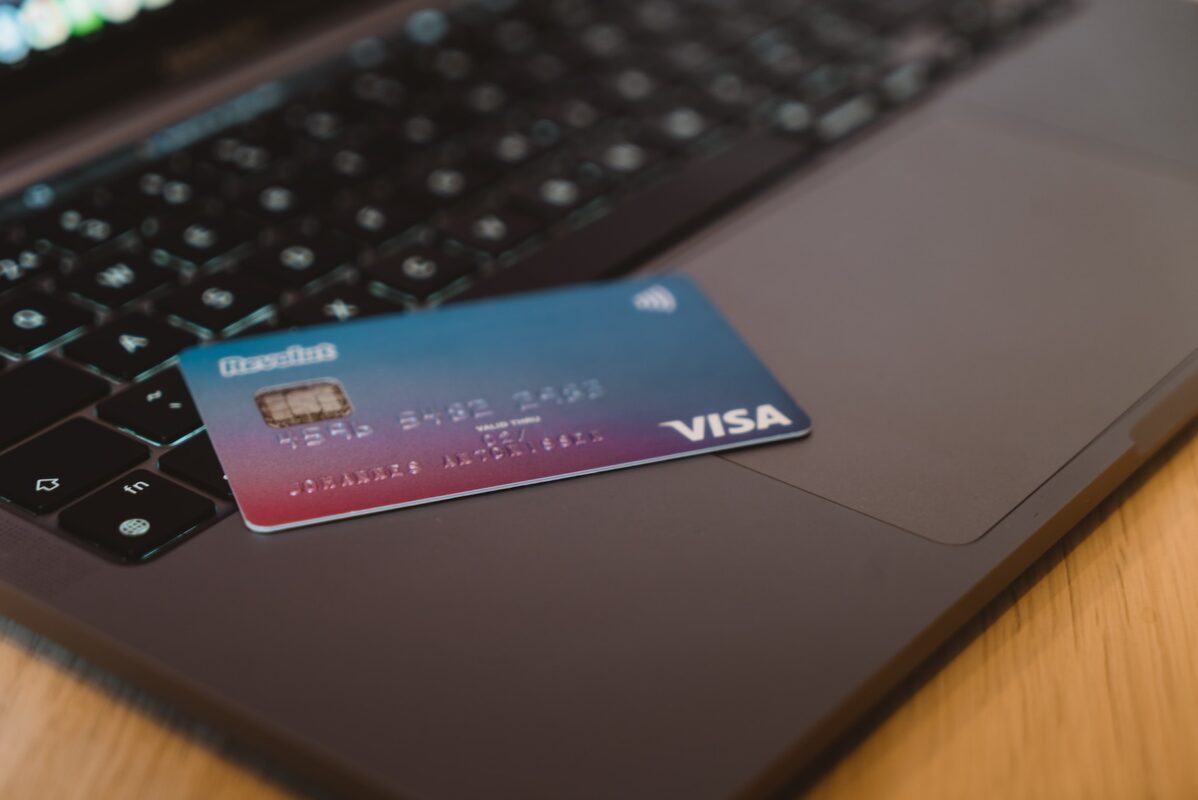
Travel debit cards from digital or challenger banks tend to be much better for use in Europe. There are very few charges and you can usually withdraw at least some cash without paying foreign withdrawal fees. The exchange rate at challenger banks tends to be better too, often sticking to the official Mastercard or interbank rate. This means you can be sure the bank isn’t profiting from you needing some euros!
Prepaid Travel Cards for Europe
A prepaid travel card is essentially a debit card that needs to be topped up from your bank account. You can top them up using online banking, via an app or in certain stores and establishments. When the funds are loaded, you can use the card as a regular debit card.
Until the relatively recent rise of digital banks, prepaid euro cards were an excellent choice for anyone travelling the continent. While they still have plenty of fees attached, they’re cheaper than traditional banks. However, with the swell of challenger banks offering excellent debit cards for travel, there’s no real need to use a prepaid card anymore.
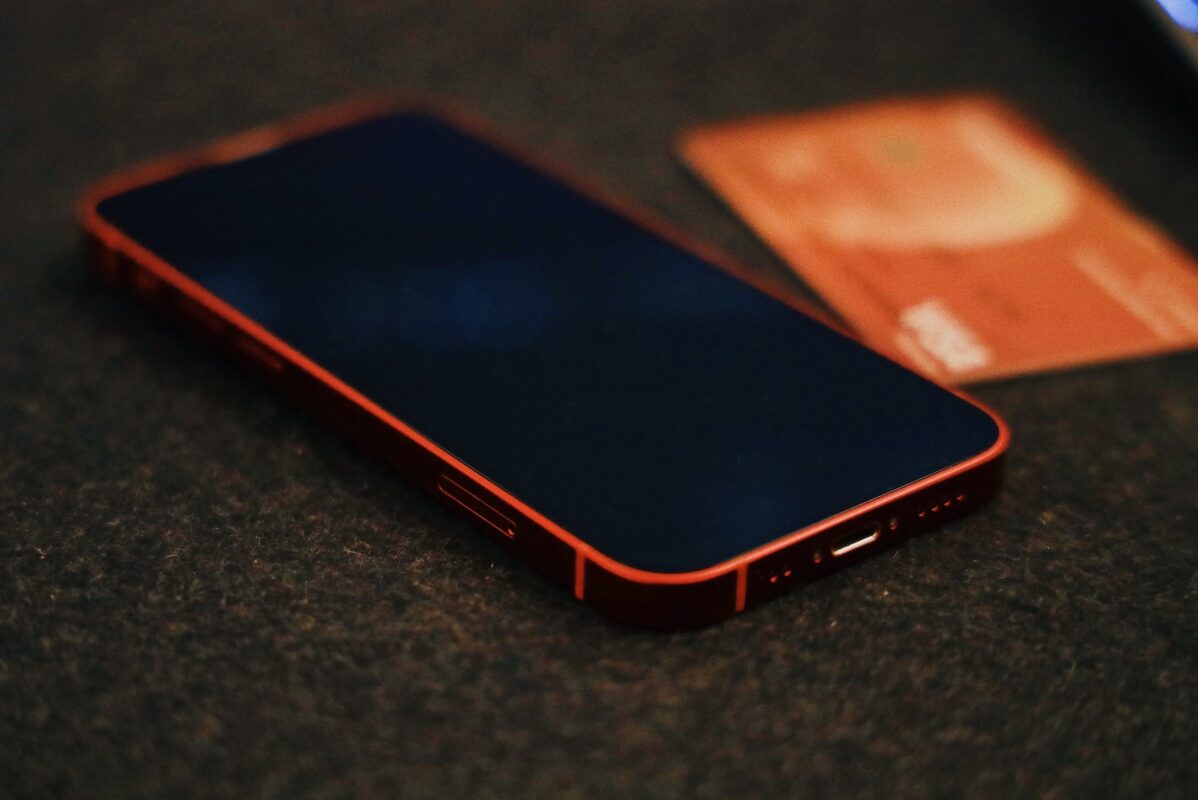
If you do opt for a prepaid euro card, ensure you understand the fees and exchange rates. Prepaid cards that take multiple currencies may offer a fantastic exchange rate if you convert the money to euros straight away. But, if you load the card with your home currency, the exchange rate for each foreign transaction is generally much worse. It’s also worth noting that some even charge you to a small fee to top up!
Credit Cards for Travel in Europe
Travel credit cards are an excellent way to save money in Europe – but only if you’re careful! Make sure you pay off the balance each month. If you don’t, the interest you’ll need to pay will negate any savings you’d otherwise make.
Most credit cards for travel offer fee-free transactions, no matter where you are in Europe. However, very few offer fee-free cash withdrawals – and even if they do, there is usually a higher interest rate attached to withdrawing cash on a credit card.

As well as fee-free transactions, travel credit cards tend to offer points for every pound, dollar or euro you spend. These points add up over time and can be redeemed for air miles, hotel stays and a range of other incentives, including cold hard cash! Exactly what is on offer will depend on your credit card provider, so shop around to make sure you get the best deal!
Direct Debit Travel Card
Direct debit travel cards offer a unique way to save money in Europe: simpler than opening a new bank account, easier than getting a new credit card and far less faff than choosing a good prepaid euro card, direct debit travel cards are changing the game.
They connect to your normal bank account and you use them as a traditional debit card. The only difference is that the transaction goes through the travel card provider who act as an intermediary between your bank and the card machine you’re using. This step means your bank won’t charge you foreign transaction fees, saving you a small fortune!
The Best Money Cards for Europe!
- Available to customers from the European Economic Area as well as many more countries!
- Multi-currency accounts on offer
- Limited free foreign withdrawals
Available to customers from many countries – As well as being available to anyone with an address in the European Economic Area , Revolut offer accounts to anyone from Australia, New Zealand, Singapore, Switzerland, UK, USA, Japan and Brazil. Revolut also offer ‘lite’ accounts to customers from other countries too!
Visa or Mastercard – Whether you get a Mastercard or Visa Revolut debit card will depend on where you live and where your account is registered. Both Visa and Mastercard work across Europe, so you won’t have an issue with either!
Spending and Withdrawals – Revolut allow you to withdraw £200GBP ( the exact amount may be slightly different in your local currency ), or make five withdrawals per month fee-free. After this, a 2% cash withdrawal fee kicks in. You also get limited fee-free card transactions each month. The first £1000GBP spent on your card (not including cash withdrawals) comes with no additional fees. After the first £1000GBP, a 0.5-1% fee applies to every transaction. With Revolut’s paid accounts, the withdrawal and spending limits are higher.
App-Based – Revolt offer full control of your account through the app. You can open a current account, multi-currency account, lock the card and create single-use digital debit cards all from the comfort of your sofa – no more needing to queue up at the bank to tell them you’re going travelling!
Accommodation Bookings – Revolut Stays allows you to book accommodation through the Revolut app and get 3-10% cashback!
You must be 18 and over to open a Revolut account. Read the full T&Cs .
- Free foreign withdrawals
- Deluxe accounts available for an additional fee
- Uses the interbank exchange rate
- Free withdrawals are limited to a certain amount of money each month
- Exchange rate changes at the weekend
- Fee-free foreign spending is limited

Starling Bank
- Fee-free foreign withdrawals and transactions
- Uses the Mastercard exchange rate
- Account set-up is quick and easy
Withdrawals – Starling allow you to withdraw up to £300GBP or make six withdrawals per day . There are no foreign withdrawal fees and Starling uses the Mastercard exchange rate with no markup. There are also no fees for using your card to pay directly when in Europe!
Ethical Banking – Starling seem determined to do things differently. They have clear ethical and environmental goals laid out on their website . While your typical high street bank is investing your money in firearms, tobacco, alcohol and fossil fuels, Starling opt for ethical investing!
Works Across Europe – Starling Bank provide a Mastercard with their accounts. This works almost everywhere in Europe!
Helps You Budget – Thanks to spending notifications, spending categories, saving spaces and goals, Starling helps you accurately budget before and during your trip. You can create a virtual debit card for each saving space, allowing you to closely monitor your spending while you travel in Europe!
- No fees on foreign spending or withdrawals
- Easily replaces your traditional bank
- Full control from your phone
- Only available to those with a UK address

- No fee for foreign transactions
- Multi-currency account – hold up to 50 currencies at once
- Some free foreign withdrawals – the exact amount depends on where you live and where the account is registered
Perfect for Digital Nomads – If your work involves clients in multiple countries, Wise has you covered. A Wise account allows you to be paid in and store multiple currencies.
Visa or Mastercard – Wise provide either a Visa or Mastercard depending on where you live and where your account is registered. However, not all Wise customers are eligible for a debit card with their account, this also depends where you live. See the full list of card-eligible countries here .
Fees for Withdrawing Cash – Wise offer some free cash withdrawals each month. The exact amount you can withdraw before incurring fees depends on where you live and where the account the registered.
Fees for Foreign Transactions – Wise allow you to spend money on your card fee-free but only if you have the correct currencies stored in your account. If not, they charge a small conversion fee for each transaction.
- Available to residents of almost every country
- Can store and spend multiple currencies with one account
- Low international transfer fees
- Not all accounts come with a debit card (it depends on where you live)
- The card doesn’t work in every country

- No foreign transaction fees
- Uses Visa’s live exchange rate
- Works in all European countries
Fees – Although you can access a network of over 60,000 ATMs fee-free in the USA, you’ll need to pay a $2.50USD fee to withdraw money abroad with your Chime debit card. However, there are no international transaction fees with Chime, so you can pay for things on your card without having to stump up for an additional fee.
Exchange Rate – When spending abroad with your Chime debit card, you’ll get the live Visa exchange rate. While fractionally worse than the Mastercard exchange rate, it’s still much better than using a money changer or letting traditional banks dictate the exchange rate. Remember to always pay in the local currency if you see the option on an ATM or card terminal!
App and Website – Both Chime’s smartphone app and website give you an excellent level of control of your account. Make sure you enable international spending either through the app or website, so you can use the card abroad! Failure to do so will prevent the card from working and could see Chime block the card due to suspicious activity!
Withdrawal Limit – Chime offer a generous $500USD daily withdrawal limit. If you’re withdrawing money abroad, you should withdraw the maximum possible to reduce the frequency you’ll be paying the $2.50USD foreign withdrawal fee!
- No rolling monthly fee
- High daily withdrawal limits
- Easy to control your account through the app or website
- Only available to customers in the USA
- No contactless card payments possible (does work with Apple and Google Pay though)
- Not all online payments are supported by Chime

- Connects with your traditional bank account
- Use the Currensea card as you would a normal debit card
- Removes foreign transaction fees usually levied from your bank
Easy to Use – While getting another travel card or opening a new bank account can feel like a hassle, Currensea making spending money in Europe easy! Thanks to open banking laws, a Currensea direct debit travel card hooks straight into your bank account, allowing you to spend money with reduced fees while abroad. Simply use the card as you would your normal debit card and Currensea handle the rest!
Different Plans – Currensea offer three different plans. The free plan offers everything you need for a shorter trip but if you travel a lot, getting either the Premium or Elite plan gives you access to better exchange rates, larger fee-free withdrawals and a range of other perks such as hire car discounts, hotel bonuses and even airport lounge access with the Elite card!
Mastercard – The Currensea direct debit travel card is powered by Mastercard. This means you can use it anywhere that accepts Mastercard (almost everywhere in Europe)!
- No need to set up a new account
- Up to £500GBP fee-free withdrawal each month
- Different plans available depending on your needs
- Small fees for foreign withdrawals after the £500GBP limit is reached
- 0.5% foreign transaction fee with the free account (no transaction fee with paid accounts)
- Still leaves you reliant on your major high street bank
Prepaid Euro Cards
While not necessary in the age of digital banks and FinTech companies, prepaid euro cards are still relatively popular – more popular than they deserve to be, honestly.
Prepaid travel cards tend to have lower fees than your traditional high street bank but the costs are higher than opting for a digital bank or even a direct debit travel card. Some prepaid cards also have nasty hidden fees, such as a fee for loading money onto the card, or a fee for getting any leftover money back after your trip.
We don’t like to recommend prepaid travel cards because they serve little purpose in today’s digital world but in case you’ve already made up your mind, these are the most popular options among travellers to Europe!
- Travelex – Best for Travellers from the USA
- Monese – Top Choice for Travellers from the UK
- Fair FX – Top Choice for Travellers from the EU
- PayPal Prepaid Mastercard – Another Good Option for Travellers from The USA
Travel Money Cards for Europe – Your Questions Answered!
Which cards are accepted in europe.
Mastercard and Visa cards are widely accepted throughout Europe and the rest of the world. You may have a hard time using an American Express card in Europe, although they’re more common than they used to be. Discover cards are less accepted than American Express. If you only have a Discover or American Express card, we recommend supplementing your wallet with a Mastercard or Visa as well!
What is a Travel Card?
Travel cards allow you to access your money, either via card transactions or an ATM, abroad, without incurring high fees from your traditional bank. They come in different forms:
– Travel Credit Cards – Usually just regular credit cards with low or no foreign use fees and often include travel-based incentives like air miles or discounts on hotel stays. – Travel Debit Cards – Can be used like a normal debit card. Often travel debit cards are supplied by a travel-friendly bank but you can also get prepaid travel debit cards that you top up from your traditional bank. You can also get direct debit travel cards which connect to your traditional bank and allow you to bypass your bank’s fees.
Travel Cards for Europe – A Round-Up
Getting the right travel card for Europe won’t make or break your trip but it can mean the difference of a few hundred dollars, even over a couple of weeks of travelling! For a longer adventure, the savings you’ll make will allow you to upgrade your accommodation choices or treat yourself to good restaurants while you travel!
It really is a no-brainer! Grab your travel card, book your flight and head to Europe for a backpacking trip to remember! Have we missed your favourite travel card from our list? Let us know in the comments below!

Tim Ashdown | Writer and Gear Specialist
After a life-changing motorcycle accident, Tim decided life was too short to stay cooped up in his home county of Norfolk, UK. Since then, he has travelled Southeast Asia, walked the Camino de Santiago and backpacked South America. His first book, From Paralysis to Santiago, chronicles his struggle to recover from the motorcycle accident and will be released later this year.

- Argentina
- Australia
- Deutschland
- Magyarország
- Nederland
- New Zealand
- Österreich
- Singapore
- United Kingdom
- United States
- 繁體中文 (香港)
- 简体中文 (中国)
The 6 Best Travel Money Cards for Europe

If you’re travelling to Europe, a travel money card can make spending and withdrawing cash when you’re away cheaper and more convenient. Different types of travel money cards, including travel debit cards, prepaid travel cards and travel credit cards, are available to support different customer needs. The right one for you will depend on your personal preference and how you like to manage your money.
Read on for all you need to know, including a closer look at travel money card types, some great options to consider, and the sorts of fees you need to think about when you choose.
Wise - our pick for travel money card for Europe
Before we get into details about different travel money card options, let’s start with the Wise card as a good all-round option that allows you to hold and spend euros, as well as a diverse range of other European and world currencies.
Wise accounts have the flexibility to hold and exchange more than 50 currencies, plus you can get a linked Wise card for a one-time delivery fee. You can either top up your account in pounds and switch to EUR, RON, HUF, NOK, DKK, SEK or any of the other supported European currencies before you travel.
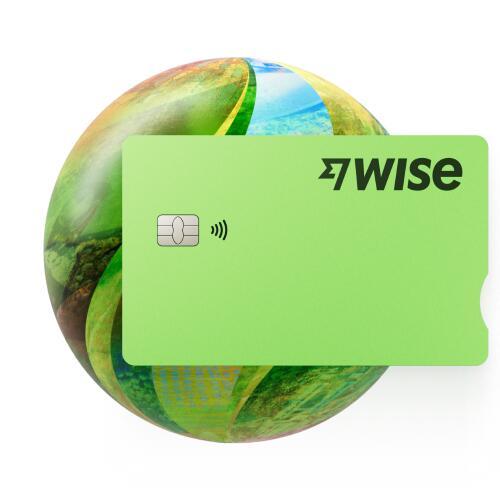
Click here to read a full Wise review.
Here are some of the advantages and disadvantages of using the Wise travel money debit card, to help you decide if it's suitable for you.
Hold and exchange 50+ currencies including EUR and a selection of other European and world currencies
No fee to spend any currency you hold, low conversion fees from 0.41%
Mid market exchange rate on all currency conversion
Some fee free ATM withdrawals every month
No ongoing fees and no interest to pay
7 GBP delivery fee
No option to earn points or rewards
What is a travel money card?
Similar to your standard bank card, a travel money card is accepted for online and in-store transactions, as well as cash withdrawals - but the features and fees you’ll get are tailored for international usage. That can lead to benefits such as improved exchange rates and reduced fees compared to your regular card.
If you’re headed to Europe, you could find a travel money card which supports the currency or currencies in the destinations you’re visiting is a good idea. While much of Europe uses the euro, there are actually 29 different European currencies, so you’ll need to double check what’s needed wherever you’re headed.
6 travel money cards for Europe compared
Before we get into each card option in more depth, here’s a summary of how six of the best travel money cards for Europe compare to each other.
The features of various travel money cards can differ significantly. Typically, travel debit cards are cost-effective and convenient, while travel credit cards offer advantages such as cashback or rewards, but may result in interest and late payment fees, depending on how you choose to pay.
Travel debit cards usually allow you to easily add funds online or via a mobile app, which helps you stick to your budget and avoid overspending. Conversely, travel credit cards enable you to spend up to your credit limit, and you can pay off the balance over several months. The choice between the two will come down to how you like to manage your money - we’ll dive into a few more details about each card type, next.
What are different types of travel cards?
Generally, UK customers are able to select a travel money card from either a regular bank or a specialist provider, with card types available including travel debit cards, travel prepaid cards or travel credit cards. We’ll walk through what each travel money card type is, and pick out a couple of good card options, so you can compare and choose.
1. Travel debit cards
2. Travel prepaid cards
3. Travel credit cards
1. Travel Debit Cards
Travel debit cards from specialist providers have linked digital accounts you can use to hold and convert a currency balance. It’s common to find a good selection of major currencies supported, including euros, Norwegian or Danish kroner, Swedish kronor, Romanian lei and more. While different cards have their own features, travel debit cards can usually be topped up easily online and through an app, with the option to see your balance and get transaction notifications through your phone too. That makes it easier to keep on top of your money, even when you’re away from home.
Travel debit card Option 1: Wise
Wise is our best value travel money debit card for Europe. There’s no fee to open a Wise account, and just a small delivery fee for your Wise card, with no minimum balance and no monthly charge. You just pay low Wise fees from 0.41% when you convert currencies, and transparent transaction fees when you exhaust the monthly free transactions available with your account.
No fee to open a Wise account, no minimum balance requirement
7 GBP one time fee to get your Wise card
2 withdrawals, to 200 GBP value per month for free, then 0.5 GBP + 1.75%
Hold EUR and 50+ other currencies, convert between them with the mid-market rate
Get local account details to receive EUR, HUF, RON and 7 other currencies for free
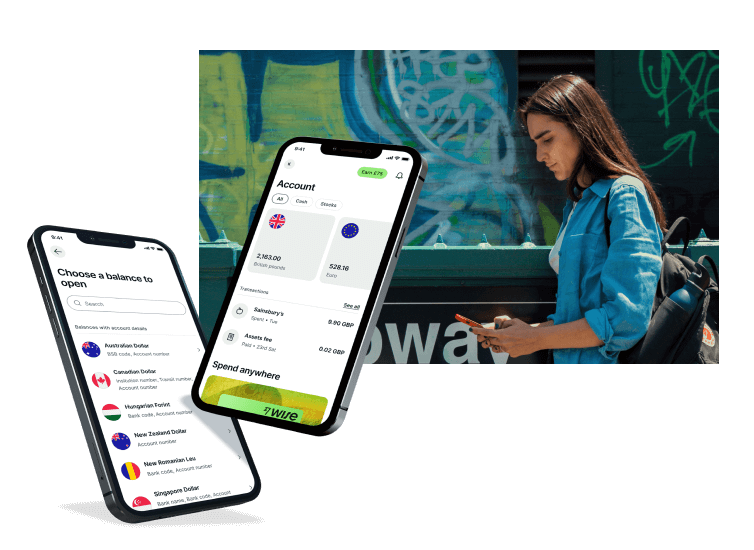
Travel debit card Option 2: Revolut
Revolut has a selection of different account tiers, so you can simply pick the account you prefer - from free Standard plans to the 12.99 GBP/month Metal plan. All Revolut accounts have linked cards, although exactly what type of card you get depends on your account tier. You can hold around 25 currencies including EUR, PLN, DKK, SEK and a selection of other major European currencies, and convert between them with the mid-market rate to your plan’s allowance.
No fee to open a Standard Revolut account, or upgrade for up to 12.99 GBP/month
Card delivery fees may apply depending on your account tier
All accounts have some fee free currency conversion with 0.5% fair usage fees after that
Standard plan holders can withdraw 200 GBP (up to 5 withdrawals in total) per month for free
Hold EUR and around 25 other currencies

Click here to read a full Revolut review
Pros and cons of using debit travel cards in Europe
Avoid interest costs and late payment fees
Hold and exchange currencies in advance or at the time of spending
Accounts can be topped up, viewed and managed using just your phone
Safe to use, as accounts aren’t linked to your main UK bank account
Travel debit cards are issued on popular global payment networks
Transaction and currency conversion fees may apply
Cash back and rewards may not be available
How to choose the best travel debit card for Europe?
The best travel debit card for Europe really depends on your personal preferences and how you like to manage your money. If you’ll be travelling widely it makes sense to look for an account with mid-market currency exchange and a large selection of supported currencies as well as EUR, like Wise. Other providers like Revolut can also be a good pick, particularly if you’ll use your account very frequently and would prefer to pay a monthly fee to unlock lots of fee free transactions and extra perks.
Is there a spending limit with a travel debit card in Europe?
Card use limits are determined by individual providers and can vary depending on the transaction type. Limits may apply on a daily, weekly or monthly basis. For instance, there may be a cap on the number or value of ATM withdrawals allowed per day or a limit on the value of contactless payments you can make. These limits are set for security reasons and can often be adjusted using the provider's app.
2. Prepaid Travel Cards
With a prepaid travel card you’ll usually need to first order a card and then add funds in the supported currency of your choice. Once you have a balance you may then be able to switch to the currency you need, to pay merchants and make cash withdrawals. While prepaid travel cards are usually issued on large global networks - and can therefore be used pretty widely - not all cards support all currencies, so you may find you pay a foreign transaction fee if you pick a card which doesn’t support all the currencies you use.
Prepaid travel card option 1: Post Office
You can pick up a Post Office prepaid travel money card in a Post Office branch or order one online. You’ll then be able to top up in pounds or one of the 22 supported currencies, which includes EUR alongside other major European currencies like NOK, DKK and SEK. There’s no fee to spend a currency you hold in your account when you’re in Europe, but if you don’t have a balance in the currency required - or if your balance isn’t high enough for the transaction, you’ll pay a 3% foreign transaction fee.
Hold and exchange 22 currencies including EUR
No fee to spend a balance in a supported currency
3% foreign transaction fee when spending a currency you don’t hold on the card
Variable ATM withdrawal fees - 2 EUR for use in Eurozone countries, for example
No interest to pay

Prepaid travel card option 2: Monese
Monese accounts can be opened by UK residents to hold GBP, EUR and RON. There are several different types of accounts, from the Simple account which has no monthly fees, to fee paying account tiers which have more features. It’s free to spend a balance you hold, so getting a EUR or RON account makes sense if you’re headed to Romania or any of the Eurozone countries. If not, you may find you pay a foreign transaction fee of 2% when you’re spending in Europe. Foreign transaction fees may be waived for higher tier account holders.
Hold a balance in GBP, EUR or RON
Choose a free Simple account, or upgrade to an account with monthly fees
Foreign transaction fees of 2% may apply if you don’t hold a EUR/RON balance, depending on your account tier
ATM withdrawal fees may apply, depending on the value of withdrawals and the account tier you hold
Track and spend Avios reward points within your account

Pros and cons of using prepaid travel cards in Europe
Manage your account, add more money or convert funds online or with an app
Accounts with no monthly fees are available
Selection of supported currencies, with no fee to spend a currency you hold
ATM withdrawals supported globally
Some accounts have extras like options to earn reward points
Typically not a huge range of currencies supported
Transaction fees apply to most accounts
How to choose the best travel prepaid card for Europe?
There’s no single best travel prepaid card for Europe - it’ll come down to your personal preference. If you hold a Monese account that supports the currency wherever you’re headed, or a Monese Classic or Premium account which waives foreign transaction fees, you might find it’s cheaper to stick with Monese when in Europe compared to using your regular bank card. The Post Office card can also be a strong pick as you can hold a balance in euros and a large selection of other major European currencies, plus you can get a card instantly by walking into a Post Office branch.
Is there a spending limit with a prepaid card in Europe?
Different prepaid travel cards set their own limits for spending and withdrawals, which can vary between currencies. You’ll need to check your card’s terms and conditions carefully to make sure you pick a provider which suits your needs.
3. Travel Credit Cards
Travel credit cards typically offer some extra international features compared to regular credit cards, such as low or no foreign transaction fees or extra option to earn rewards when you’re abroad. In general, travel credit cards are safe and convenient but can be more expensive compared to using a debit card option. Before you select the right card for you it’s important to check the fees, rates, eligibility rules and interest rates which apply, so you can make sure it’s a good fit for you.
Travel credit card option 1: Barclaycard Rewards Visa
The Barclaycard Rewards Visa card doesn't charge foreign transaction fees or international ATM fees. Instead, your spending abroad is converted into pounds using the Visa exchange rate and added to your monthly bill. To avoid fees and interest charges, you must pay your bill in full every month. However, you can earn cashback on your everyday purchases.
No foreign transaction or foreign ATM fee
Earn cashback at 0.25% on spending
Protection on purchases over 100 GBP
International spending uses the Visa exchange rate
Variable interest rates which apply if you don’t pay off your bill in full
Travel credit card option 2: Halifax Clarity Mastercard
When you check your eligibility for the Halifax Clarity Mastercard, you'll be able to see the variable interest rate that’s available to you. No matter what rate’s offered, you won't have to pay any foreign transaction or foreign ATM fees, and all currency conversions are done using the Mastercard exchange rate.
Variable interest rates
Check your eligibility and order a card online easily
No foreign transaction fee
No ATM fee - but interest will accrue instantly when you make a withdrawal
Mastercard exchange rates apply
Pros and cons of using credit cards in Europe
Spending from 100 GBP has extra consumer protection
Spread the cost of your travel over several months
Check eligibility for a card online with no impact on your credit score
You may pay no foreign transaction fee and no ATM fee
Network exchange rates usually apply, which are usually pretty fair
Interest charged if you don’t repay in full every month
Eligibility rules apply
How to choose the best travel credit card for Europe?
Selecting the best travel credit card for Europe largely depends on individual preferences. If you aim to earn rewards and cashback on your foreign transactions, the Barclaycard Rewards Visa may be a suitable option as it does not have a foreign transaction fee and provides cashback on all purchases. Whichever card you’re considering you’ll want to weigh up the potential fees you’ll need to pay against the rewards you can earn to make sure it’s worthwhile.
If you regularly travel to Europe, getting a travel money card which supports the currencies you need frequently can help you save money. Travel money cards have different features, and can be picked up via regular banks, online specialists and even the Post Office.
You could opt for a low cost travel debit card which comes with a linked account to hold a selection of currencies - like the Wise account. Or you might prefer a prepaid travel money card like the Monese card which can be linked to either a fee free account or an account which has monthly fees in exchange for lower transaction charges. Finally, another option is to get a travel credit card either to earn cashback and rewards, or to avoid foreign transaction fees.
The good news is that the UK market is well served for all types of travel money cards - use this guide to start your research and pick the right option for your specific needs.
FAQ - Best travel cards for Europe
You can usually make cash withdrawals with a credit card in Europe at any ATM that supports your card network. You’ll often find that a fee applies, and you may start to accumulate interest on the withdrawn amount immediately. Travel money debit cards from providers like Wise and Revolut can be a lower cost option for cash withdrawals overseas.
You can use your debit card anywhere you see the card network’s logo displayed. Visa and Mastercard networks are very well supported globally, including in Europe, making these good options to look out for when you pick your travel debit card for Europe.
Prepaid cards from reputable providers are safe to use at home and abroad. They aren’t linked to your main bank account which can offer extra peace of mind, and may also make it easier to manage your travel budget. However, you’ll need to check the card features and fees carefully to make sure you're getting the best match for your needs.
- Argentina
- Australia
- Deutschland
- Magyarország
- Nederland
- New Zealand
- Österreich
- Singapore
- United Kingdom
- United States
- 繁體中文 (香港)
- 简体中文 (中国)
The 6 Best Travel Money Cards for Europe - 2024

If you’re travelling to Europe, a travel money card can make spending and withdrawing cash when you’re away cheaper and more convenient. Different types of travel money cards, including travel debit cards, prepaid travel cards and travel credit cards, are available to support different customer needs. The right one for you will depend on your personal preference and how you like to manage your money.
Read on for all you need to know, including a closer look at travel money card types, some great options to consider, and the sorts of fees you need to think about when you choose.
Wise - our pick for travel debit card for Europe
Before we get into details about different travel money card options, let’s start with the Wise card as a good all-round option that allows you to hold and spend euros, as well as a diverse range of other European and world currencies.

Here are some of the advantages and disadvantages of using the Wise travel money debit card , to help you decide if it's suitable for you.
Hold and exchange 50+ currencies including EUR and a selection of other European and world currencies
No fee to spend any currency you hold, low conversion fees from 0.41%
Mid market exchange rate on all currency conversion
Some fee free ATM withdrawals every month
No ongoing fees and no interest to pay
ATM fees apply once you exceed your plan limits
No option to earn points or rewards
Click here to read a full Wise review
What is a travel money card?
Similar to your standard bank card, a travel money card is accepted for online and in-store transactions, as well as cash withdrawals - but the features and fees you’ll get are tailored for international usage. That can lead to benefits such as improved exchange rates and reduced fees compared to your regular card.
If you’re headed to Europe, you could find a travel money card which supports the currency or currencies in the destinations you’re visiting is a good idea. While much of Europe uses the euro, there are actually 29 different European currencies, so you’ll need to double check what’s needed wherever you’re headed.
6 travel money cards for Europe compared
Before we get into each card option in more depth, here’s a summary of how six of the best travel money cards for Europe compare to each other.
The features of various travel money cards can differ significantly. Typically, travel debit cards are cost-effective and convenient, while travel credit cards offer advantages such as cashback or rewards, but may result in interest and late payment fees, depending on how you choose to pay.
Travel debit cards usually allow you to easily add funds online or via a mobile app, which helps you stick to your budget and avoid overspending. Conversely, travel credit cards enable you to spend up to your credit limit, and you can pay off the balance over several months. The choice between the two will come down to how you like to manage your money - we’ll dive into a few more details about each card type, next.
What are different types of travel cards?
Generally, Canadian customers are able to select a travel money card from either a regular bank or a specialist provider, with card types available including travel debit cards, travel prepaid cards or travel credit cards. We’ll walk through what each travel money card type is, and pick out a couple of good card options, so you can compare and choose.
1. Travel debit cards
2. Travel prepaid cards
3. Travel credit cards
1. Travel Debit Cards
Travel debit cards from specialist providers have linked digital accounts you can use to hold and convert a currency balance. It’s common to find a good selection of major European currencies supported, including euros and British pounds. Some more flexible card options, like Wise, also support other European currencies like Norwegian or Danish kroner, Swedish kronor, Romanian lei and more. While different cards have their own features, travel debit cards can usually be topped up easily online and through an app, with the option to see your balance and get transaction notifications through your phone too. That makes it easier to keep on top of your money, even when you’re away from home.
Travel debit card Option 1: Wise
Wise is our pick for travel debit card for Europe . There’s no fee to open a Wise account, and no delivery fee for your Wise card, with no minimum balance and no monthly charge. You just pay low Wise fees from 0.41% when you convert currencies, and transparent ATM fees when you exhaust the monthly free transactions available with your account.
No fee to open a Wise account, no minimum balance requirement
No fee to get your Wise card, free to spend any currency you hold
2 withdrawals, to 350 CAD value per month for free, then 1.5 CAD + 1.75%
Hold EUR and 50+ other currencies, convert between them with the mid-market rate
Get local account details to receive EUR, HUF, RON and 6 other currencies for free
Travel debit card Option 2: Canada Post Cash Passport
You can pick up a Canada Post Cash Passport in your local Post Office, and top up your account in CAD. You can then switch your balance to any of the 7 supported major currencies - or you can just allow the card to convert to the currency you need, although there is a foreign exchange fee of 3.25% for doing so. You can use your Canada Post Cash Passport card in ATMs and wherever the network is supported. ATM fees apply which vary by currency.
Supports 7 major currencies, including euros and pounds
No fee to spend currencies you hold in your account
Variable ATM fee, 1.9 EUR when in the the Eurozone for example
1.5% fee for using your card in Canada - plus any applicable fee to convert funds back to CAD if you hold a foreign currency
Pros and cons of using debit travel cards in Europe
Avoid interest costs and late payment fees
Hold and exchange currencies in advance or at the time of spending
Accounts can be topped up, viewed and managed using just your phone
Safe to use, as accounts aren’t linked to your main Canadian bank account
Travel debit cards are issued on popular global payment networks
Transaction and currency conversion fees may apply
Cash back and rewards may not be available
How to choose the best travel debit card for Europe?
The best travel debit card for Europe really depends on your personal preferences and how you like to manage your money. If you’ll be travelling widely it makes sense to look for an account with mid-market currency exchange and a large selection of supported currencies as well as EUR, like Wise. Other providers like Canada Post also support EUR and GBP for your trip to Europe, and the Cash Passport can be conveniently collected in your local Post Office.
Is there a spending limit with a travel debit card in Europe?
Card use limits are determined by individual providers and can vary depending on the transaction type. Limits may apply on a daily, weekly or monthly basis. For instance, there may be a cap on the number or value of ATM withdrawals allowed per day or a limit on the value of contactless payments you can make. These limits are set for security reasons and can often be adjusted using the provider's app.
2. Prepaid Travel Cards
With a prepaid travel card you’ll usually need to first order a card and then add funds in the supported currency of your choice. Once you have a balance you can then pay merchants and make cash withdrawals at home and abroad. While prepaid travel cards are usually issued on large global networks - and can therefore be used pretty widely - you may find you pay a foreign transaction fee when overseas, depending on the specific card you select.
Prepaid travel card option 1: BMO Reloadable Mastercard
The BMO Reloadable Mastercard can be topped up in CAD and used when you travel in Europe. You’ll pay a 2.5% foreign transaction fee when overseas, but you’ll still have the advantage that - as with other prepaid and travel cards - this card is not linked to your primary bank account, so it can increase security when spending abroad. There’s a 6.95 CAD annual fee, but as this is a purchase card rather than a credit card, there’s no interest to worry about. You just top up and you can spend up to your account balance freely.
6.95 CAD annual fee, 2.5% foreign transaction fee
5 CAD ATM fee
No interest to worry about
Manage your card online or using your phone, to top up and view balance
Add funds from BMO or other Canadian banks directly
Prepaid travel card option 2: Koho Premium Mastercard
You can get up to 2% cash back with the Koho Premium Mastercard, and there’s no foreign transaction fee to worry about. Instead, you pay a monthly card fee of 9 CAD. The basic card is free to get, or you can upgrade to a Koho metal card for 159 CAD if you want a fancier way to pay when you’re at home and abroad.
9 CAD/month premium fee
No foreign transaction fee
Earn cash back on your spending
Pros and cons of using prepaid travel cards in Europe
Manage your account, add more money or convert funds online or with an app
Accounts with no monthly fees are available
Issued on globally popular networks for good coverage
ATM withdrawals supported globally
Some accounts have extras like options to earn cash back or reward points
Typically only CAD supported - watch out for foreign transaction charges
Transaction fees apply to most accounts
How to choose the best travel prepaid card for Europe?
There’s no single best travel prepaid card for Europe - it’ll come down to your personal preference. If you don’t mind paying a monthly fee you might like the Koho Premium card which waives foreign transaction fees, and other charges like ATM withdrawal fees. Otherwise, if you just want a simple prepaid card and don’t mind the foreign transaction fee when you’re in Europe, the BMO prepaid card might suit you.
Is there a spending limit with a prepaid card in Europe?
Different prepaid travel cards set their own limits for spending and withdrawals, which can vary between currencies. You’ll need to check your card’s terms and conditions carefully to make sure you pick a provider which suits your needs.
3. Travel Credit Cards
Travel credit cards typically offer some extra international features compared to regular credit cards, such as low or no foreign transaction fees or extra option to earn rewards when you’re abroad. In general, travel credit cards are safe and convenient but can be more expensive compared to using a debit card option. Before you select the right card for you it’s important to check the fees, rates, eligibility rules and interest rates which apply, so you can make sure it’s a good fit for you.
Travel credit card option 1: HSBC World Elite Mastercard
The HSBC World Elite Mastercard has been optimised for overseas use, with extra rewards on international spending and travel, plus no foreign transaction fees to pay. There are lots of ways to earn rewards, including variable new customer bonus offers - the downside is that there’s an annual fee of 149 CAD, so you’ll need to check if the benefits outweigh the costs. As with any other credit card, you’ll also need to pay off your bill in full every month to avoid interest charges.
149 CAD annual fee, 5 CAD ATM withdrawal fee
Variable interest rate
Options to earn rewards, including enhanced benefits for travel spending
Travel credit card option 2: Home Trust Preferred Visa Card
The Home Trust Preferred Visa Card is a credit card with a variable interest rate, no foreign exchange fees and 1% cash back on all eligible purchases. There’s no annual fee to pay, although the ATM withdrawal fees can run pretty high - 1% or 1.5% depending on the ATM type, and the maximum cap is 15 CAD for some withdrawals.
No annual fee, no foreign transaction fee
1% cash back on all eligible purchases
ATM fees apply, which are set as a percentage, and can run pretty high
Pros and cons of using credit cards in Europe
Some cards offer zero liability policies, for extra consumer protection
Spread the cost of your travel over several months
You may pay no foreign transaction fee
Network exchange rates typically apply, which are usually pretty fair
Some cards offer cash back and rewards on spending
Interest charged if you don’t repay in full every month
Eligibility rules apply
How to choose the best travel credit card for Europe?
Selecting the best travel credit card for Europe largely depends on individual preferences. If you aim to earn rewards and cashback on your foreign transactions, the Home Trust Preferred Visa may be a suitable option as it does not have a foreign transaction fee and provides cash back on all purchases. Whichever card you’re considering you’ll want to weigh up the potential fees you’ll need to pay against the rewards you can earn to make sure it’s worthwhile.
If you regularly travel to Europe, getting a travel money card which supports the currencies you need frequently can help you save money. Travel money cards have different features, and can be picked up via regular banks, online specialists and even the Post Office.
You could opt for a low cost travel debit card which comes with a linked account to hold a selection of currencies - like the Wise account. Or you might prefer a prepaid travel money card like the Koho Premium Mastercard which has monthly fees in exchange for lower transaction charges - handy if you use it abroad often. Finally, another option is to get a travel credit card either to earn cashback and rewards, or to avoid foreign transaction fees.
The good news is that the Canadian market is well served for all types of travel money cards - use this guide to start your research and pick the right option for your specific needs.
FAQ - Best travel cards for Europe
You can usually make cash withdrawals with a credit card in Europe at any ATM that supports your card network. You’ll often find that a fee applies, and you may start to accumulate interest on the withdrawn amount immediately. Travel money debit cards from providers like Wise and Canada Post can be a lower cost option for cash withdrawals overseas.
You can use your debit card anywhere you see the card network’s logo displayed. Visa and Mastercard networks are very well supported globally, including in Europe, making these good options to look out for when you pick your travel debit card for Europe.
Prepaid cards from reputable providers are safe to use at home and abroad. They aren’t linked to your main bank account which can offer extra peace of mind, and may also make it easier to manage your travel budget. However, you’ll need to check the card features and fees carefully to make sure you're getting the best match for your needs.
Here Are the Four Best Travel Money Cards in 2024

François Briod
Co-Founder of Monito and money transfer expert, François has been helping Monito’s users navigate the jungle of money transfer fees, bad exchange rates and tricks for the last ten years.
Jarrod Suda

A writer and editor at Monito, Jarrod is passionate about helping people apply today’s powerful finance technologies to their lives. He brings his background in international affairs and his experiences living in Japan to provide readers with comprehensive information that also acknowledges the local context.
Links on this page, including products and brands featured on ‘Sponsored’ content, may earn us an affiliate commission. This does not affect the opinions and recommendations of our editors.
From the multitude of bank fees and ATM charges to hidden currency conversion fees, there's no question that spending your money abroad while travelling can be costly — and that's saying nothing about the cost of the holiday itself!
As you prepare for your trip abroad, the golden rule is that you'll save the most money by using the local currency of your destination. This means withdrawing local cash at foreign ATMs and using a debit card to pay directly in the local currency. For example, if you're from the UK, using your bank's debit card that accesses your British pounds will likely lose you money to hidden fees at ATMs abroad and at local merchants.
In general, we rate Revolut as the best travel card all around. Its versatile account and card can be used to spend like a local pretty much anywhere in the world. ✨ Get 3 months of free Revolut Premium as a Monito reader with our exclusive link .
If you're from the EU, UK, or US, here are a few more specific recommendations to explore:
- Best for travelling from the UK: Chase
- Best for travelling from the US: Chime ®
- Best for travelling from the Eurozone: N26
If it's not possible for you to spend in the local currency when travelling abroad, then spending in your home currency while using a card that doesn't charge any hidden exchange rate markups from your bank (e.g. only the VISA or Mastercard exchange rates to convert currency) is still a good bet for most people.
In this guide, we explore cards that waive or lower ATM fees and that hold multiple currencies. Spend on your holiday like a local and enjoy peace of mind after each tap and swipe!
Best Travel Cards (And More!) at a Glance
Best travel money cards.
- 01. What is the best best multi currency card? scroll down
- 02. Are prepaid currency cards really it? scroll down
- 03. Monito's best travel money card tips scroll down
- 04. FAQ about the best travel cards scroll down
Revolut: Best All-Rounder
Revolut is one of the most well-known fintechs in the world because it offers services across Europe, the Americas, Asia, and Oceania.

- Trust & Credibility 8.9
- Service & Quality 7.9
- Fees & Exchange Rates 8.3
- Customer Satisfaction 9.3
Revolut is available in many countries. You can double-check if it's available in yours below:
Here's an overview of Revolut's plans:
Revolut Ultra is currently only available in the UK and EU.
Like Wise, Revolut converts your currency to the local currency of your travel destination at an excellent exchange rate (called the 'Revolut Rate', which, on weekdays, is basically on par with the rate you see on Google), making it a good way to buy foreign currency before travelling abroad. As always though, bear in mind that Revolut's exchange rates might be subject to change.
Revolut's Standard Plan only allows currency exchange at the base mid-market exchange rate for transfers worth £1,000 per month. ATM withdrawals are also free for the first €200 (although third-party providers may charge a withdrawal fee, and weekend surcharges may also apply). These allowances can be waived by upgrading memberships.
N26: Good Bank For EU Travellers
One of the most well-known neobanks in Europe, N26 and its debit card operate in euros only. However, N26 is a partner with Wise and has fully integrated Wise's technology so that you never have to pay foreign transaction fees on your purchases outside of the eurozone. While N26 does not have multi-currency functionality, N26 will apply the real exchange rate on all your foreign purchases and will never charge a commission fee — making N26's card a powerful card for EU/EEA residents who travel across the globe.

- Trust & Credibility 8.0
- Service & Quality 8.0
- Fees & Exchange Rates 9.3
- Customer Satisfaction 8.5
These are the countries in which you can register for an N26 account:
And here is an overview of the various plans and account:
This low-fee option for banking is also ideal for travellers who do not belong to a European bank but frequent the Eurozone. For example, N26 is available for residents and citizens of Switzerland, Norway, and other European Economic Area countries that do not run on the Euro.
These citizens, who are in close proximity to the Eurozone, will save each time they spend with an N26 card while in Europe. N26 provides three free ATM withdrawals per month in euros but does charge a 1.7% fee per ATM withdrawal outside of Europe.
Take a look at our guide to the best travel cards for Europe to learn more.
Wise: Best For Multi-Currency Balances
Load up to 54 currencies onto this card at the real exchange rate, giving you access to truly global travel.

- Trust & Credibility 9.3
- Service & Quality 8.9
- Fees & Exchange Rates 7.6
- Customer Satisfaction 9.4
These are the countries in which you can order a Wise debit card:
Unlike banks, credit unions, airport kiosks, and foreign ATMs, Wise is transparent about never charging a hidden exchange rate margin when you convert your home currency into up to 54 currencies. The live rate you see on Google or XE.com is the one you get with Wise.
An industry-low commission fee per transaction will range from 0.35% to 2.85%, depending on the currency.
Chase: Great UK Bank For Travel
A recent arrival from the USA, Chase is one of the UK’s newest digital challenger banks and comes with a rock-solid reputation and no monthly charges, no currency conversion charges, no withdrawal fees, and no other charges for everyday banking from Chase. It’s a simple, streamlined bank account with an excellent mobile banking app and a great cashback offer. However, it doesn’t yet offer more advanced features like international money transfers, joint accounts, business banking, overdrafts and loans, and teen or child accounts.

- Trust & Credibility 10
- Fees & Exchange Rates 10
Chime: Great Account For US Travelers
Chime is a good debit card for international travel thanks to its no foreign transaction fees¹. Unlike multi-currency accounts like Revolut (which let you hold local currency), Chime uses the live exchange rate applied by VISA. This rate is close to the mid-market rate, and Chime does not add any extra markup to your purchases, although out-of-network ATM withdrawal and over-the-counter advance fees may still apply.

- Trust & Credibility 9.5
- Service & Quality 8.8
- Fees & Exchange Rates 9.8
- Customer Satisfaction 8.2
While Chime waives ATM fees at all MoneyPass, AllPoint, and VISA Plus Alliance ATMs within the United States, this fee waiver does not extend to withdrawals made outside the country. For withdrawals abroad, Chime applies a $2.50 fee per transaction, with a daily withdrawal limit of $515 or its equivalent. This is in addition to any fees charged by the ATM owner. Therefore, we recommend Chime primarily for card purchases rather than relying on it for withdrawing cash while traveling internationally.
- No foreign transaction fees ¹;
- Uses VISA's exchange rate ( monitor here ):
- A $2.50 fee per ATM withdrawal made outside of the United States;
- More info: Read our Chime review or visit their website .
Best Travel Money Cards in 2024 Compared by Country
In the table below, see our comparison summary of the four best travel cards for 2024 by country:
Last updated: 8 January 2024
What's The Best Prepaid Card to Use Abroad?

Travel cards come in many varieties, such as standard credit cards or debit cards with no foreign transaction fees or cards that waive all foreign ATM withdrawal fees.
What is a Multi-Currency Card?
Multi-currency cards are a specific type of travel card that allows you to own all kinds of foreign currencies, which you can instantly access when you pay with your card abroad. By spending the local currency in the region of travel , you bypass poor foreign exchange rates. ATMs and cashless payment machines will treat your card like a local card.
We have already mentioned a few multi-currency cards in this review, but we will also introduce Travelex . Travelex's Money Card also allows you to top up several foreign currencies — albeit at exchange rates slightly poorer than the real mid-market rate .
Wise Account
Wise has one of the best multi-currency cards available on the market.

Read our full review for more details.
Revolut is impressive for its vast options in currencies and its additional services.
Our in-depth review explores Revolut's services in detail.
Travelex offers a prepaid travel money card that supports 10 currencies and waives all ATM withdrawal fees abroad.

- Trust & Credibility 9.0
- Service & Quality 5.8
- Fees & Exchange Rates 7.1
Travelex charges fees, which fluctuate according to the exchange rates of the day, in order to convert your home currency into the currencies that it supports. But once the currency is on the card, you'll be able to spend like a local. Learn more with our full review .
Don’t Let Banks, Bureaux de Change, and ATMs Eat Your Lunch 🍕!
Are you withdrawing cash at an ATM in the streets of Paris? Exchanging currencies at Gatwick airport? Paying for a pizza with your card during a holiday in Milano? Every time you exchange currencies, you could lose between 2% to 20% of your money in hidden fees . Keep reading below to make sure you recognize and avoid them.
Currency Exchange Fees Eating My Lunch? What’s That?
You’re often charged a hidden fee in the form of an alarming exchange rate.
At any given time, there is a so-called “ mid-market exchange rate ” — this is the real exchange rate you can see on Google . However, the money transfer provider or bank you use to exchange currencies rarely offers this exchange rate. Instead, you will get a much worse exchange rate. They pocket this margin between the actual rate and the poor exchange rate they apply, allowing the bank or money transfer provider to profit from the currency exchange.
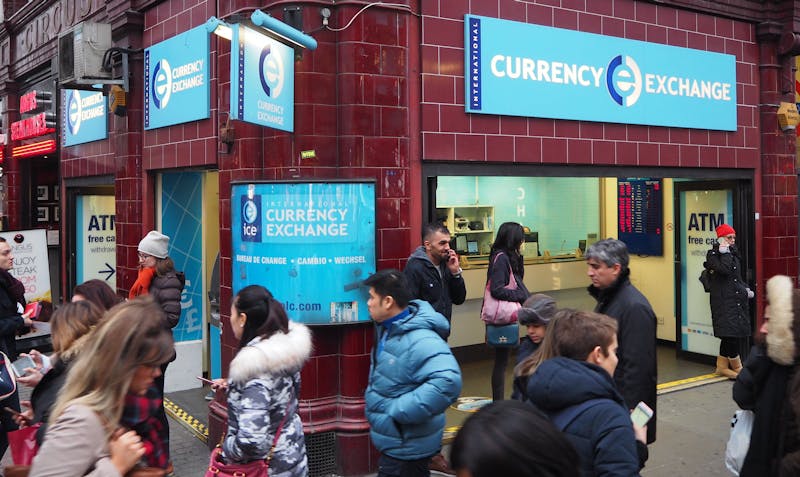
In other words, you or your recipient will receive less foreign currency for each unit of currency you exchange. All the while, the provider will claim that they charge zero commission or zero fees.
So the question now is… how can you avoid them? Thankfully, the best travel money cards will allow you to hold the local currency, which you can access instantly with a tap or swipe. Carrying the local currency avoids exchange rate margins on every purchase.
Top Travel Money Tips
- Avoid bureaux de change. They charge between 2.15% and 16.6% of the money exchanged.
- Always pay in the local currency and never accept the dynamic currency conversion .
- Don't use your ordinary debit or credit card unless it's specifically geared toward international use. Doing this will typically cost you between 1.75% and 4.25% per transaction. Instead, use one of the innovative travel money cards below.
By opting for a travel card without FX fees, you can freely swipe your card abroad without worrying about additional charges. However, saving money doesn't stop there. To make the most out of your travel budget, consider using Skyscanner , one of the most powerful flight search engines available that allows you to compare prices from various airlines and find the best deals.
With Skyscanner's user-friendly interface and comprehensive search options, you can discover cheap flights and enjoy your holidays with peace of mind and more money in your pocket.
Best Travel Money Card Tips

When you convert your home currency into a foreign currency, foreign exchange service providers will charge you two kinds of fees :
- Exchange Rate Margin: Providers apply an exchange rate that is poorer than the true "mid-market" exchange rate . They keep the difference, called an exchange rate margin .
- Commission Fee: This fee is usually a percentage of the amount converted, which is charged for the service provided.
With these facts in mind, let's see what practices are useful to avoid ATM fees, foreign transaction fees, and other charges you may encounter while on your travels.
Tip 1: While Traveling, Avoid Bureaux de Change At All Costs
Have you ever wondered how bureaux de change and currency exchange desks are able to secure prime real estate in tourist locations like the Champs-Élysées in Paris or Covent Carden in London while claiming to take no commission? It’s easy: they make (plenty of) money through hidden fees on the exchange rates they give you.
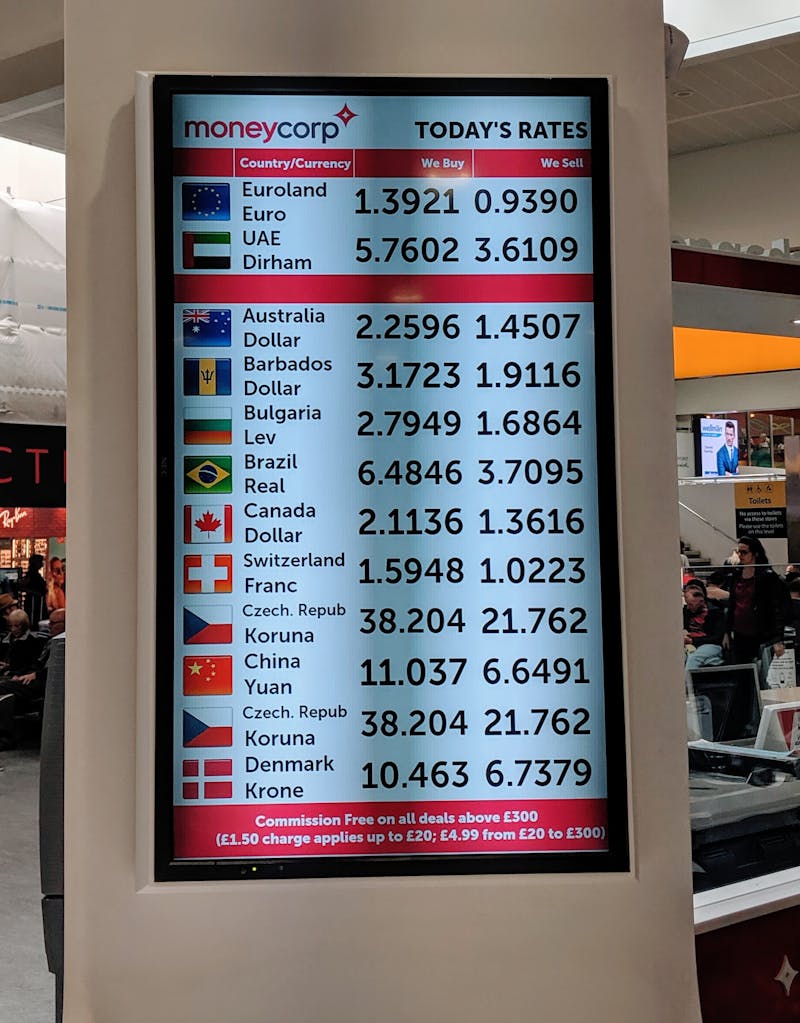
Our study shows that Bureaux de Change in Paris charges a margin ranging from 2.15% at CEN Change Dollar Boulevard de Strasbourg to 16.6% (!!) at Travelex Champs-Élysées when exchanging 500 US dollars into euros for example.
If you really want cash and can’t wait to withdraw it with a card at an ATM at your destination, ordering currencies online before your trip is usually cheaper than exchanging currencies at a bureau de change, but it’s still a very expensive way to get foreign currency which we, therefore, would not recommend.
Tip 2: Always Choose To Pay In the Local Currency

Don’t fall for the dynamic currency conversion trap! When using your card abroad to pay at a terminal or withdraw cash at an ATM, you’ve probably been asked whether you’d prefer to pay in your home currency instead of the local currency of the foreign country. This little trick is called dynamic currency conversion , and the right answer to this sneaky question will help you save big on currency exchange fees.
As a general rule, you always want to pay in the local currency (euros in Europe, sterling in the UK, kroner in Denmark, bahts in Thailand, etc.) when using your card abroad, instead of accepting the currency exchange and paying in your home currency.
This seems like a trick question - why not opt to pay in your home currency? On the plus side, you would know exactly what amount you would be paying in your home currency instead of accepting the unknown exchange rate determined by your card issuer a few days later.
What is a Dynamic Currency Conversion?
However, when choosing to pay in your home currency instead of the local one, you will carry out what’s called a “dynamic currency conversion”. This is just a complicated way of saying that you’re exchanging between the foreign currency and your home currency at the exact time you use your card to pay or withdraw cash in a foreign currency, and not a few days later. For this privilege, the local payment terminal or ATM will apply an exchange rate that is often significantly worse than even a traditional bank’s exchange rate (we’ve seen margins of up to 8%!), and of course, much worse than the exchange rate you would get by using an innovative multi-currency card (see tip #3).
In the vast majority of times, knowing with complete certainty what amount you will pay in your home currency is not worth the additional steep cost of the dynamic currency conversion, hence why we recommend always choosing to pay in the local currency.
Tip 3: Don't Use a Traditional Card To Pay in Foreign Currency/Withdraw Cash Abroad

As mentioned before, providers make money on foreign currency conversions by charging poor exchange rates — and pocketing the difference between that and the true mid-market rate. They also make money by charging commission fees, which can either come as flat fees or as a percentage of the transaction.
Have a look at traditional bank cards to see how much you can be charged in fees for spending or withdrawing $500 while on your holiday.
These fees can very quickly add up. For example, take a couple and a child travelling to the US on a two-week mid-range holiday. According to this study , the total cost of their holiday would amount to around $4200. If you withdraw $200 in cash four times and spend the rest with your card, you would pay $123 in hidden currency exchange and ATM withdrawal fees with HSBC or $110 with La Banque Postale. With this money, our travellers could pay for a nice dinner, the entrance fee to Yosemite Park, or many other priceless memories.
Thankfully, new innovative multi-currency cards will help you save a lot of money while travelling. Opening an N26 Classic account and using the N26 card during the same US holidays would only cost $13.60.
Need Foreign Cash Anyway?
In many countries, carrying a wad of banknotes is not only useful but necessary to pay your way since not every shop, market stall, or street vendor will accept card payments. In these cases you'll have two options to exchange foreign currency cheaply:
1. Withraw at an ATM
As we've explored in great depth in this article, withdrawing money from a foreign ATM will almost always come with fees — at the very least from the ATM itself, and so it's therefore the best strategy to use a travel debit card that doesn't charge in specific ATM withdraw fees on its own to add insult to injury. That said, if you need cash, we recommend making one large withdrawal rather than multiple smaller ones . This way, you'll be able to dodge the fees being incurred multiple times.
2. Buy Banknotes (at a Reasonable Rate!)
As we've also seen, buying foreign currency at the airport, at foreign bank branches, or in bureaux de change in tourist hotspots can be surprisingly expensive. Still, not all exchange offices are equally pricey . If you're looking for a well-priced way to exchange your cash into foreign currency banknotes before you travel, Change Group will let you order foreign currency online and pick them up at the airport, train station, or a Change Group branch just before you leave for your holiday. A few pick-up locations in the UK include:
- London centre (multiple locations),
- Glasgow centre,
- Oxford centre,
- Luton Airport,
- Gatwick Airport,
- St. Pancras Station.
(Note that Change Group also has locations in the USA, Australia, Germany, Spain, Sweden, Austria, and Finland!)
Although its exchange rates aren't quite as good as using a low-fee debit card like Revolut, Change Group's exchange rates between popular currencies tend to be between 2% to 3%, which is still a lot better than you'll get at the bank or at a touristy bureau de change in the middle or Paris or Prague!
FAQ About the Best Travel Money Cards
Having reviewed and compared several of the industry's leading neobanks, experts at Monito have found the Wise Account to offer the best multi-currency card in 2024.
In general, yes! You can get a much better deal with new innovative travel cards than traditional banks' debit/credit cards. However, not all cards are made equal, so make sure to compare the fees to withdraw cash abroad, the exchange rates and monthly fees to make sure you're getting the best deal possible.
- Sign up for a multi-currency account;
- Link your bank to the account and add your home currency;
- Convert amount to the local currency of holiday destination ( Wise and Revolut convert at the actual mid-market rate);
- Tap and swipe like a local when you pay at vendors.
Yes, the Wise Multi-Currency Card is uniquely worthwhile because it actually converts your home currency into foreign currency at the real mid-market exchange rate . Wise charges a transparent and industry-low commission fee for the service instead.
More traditional currency cards like the Travelex Money Card are good alternatives, but they will apply an exchange rate that is weaker than the mid-market rate.
The Wise Multi-Currency Card is the best money card for euros because unlike banks, credit unions, airport kiosks, and foreign ATMs, Wise is transparent about never charging a hidden exchange rate margin when you convert your local currency into euros with them.
The live rate you see on Google or XE.com is the one you get with Wise . An industry-low commission fee will range from 0.35% to 2.85%. USD to EUR transfers generally incur a 1.6% fee.
Learn more about how to buy euros in the United States before your trip.
There are usually three types of travel cards, prepaid travel cards, debit travel cards and credit travel cards. Each have pros and cons, here's a short summary:
- Prepaid travel cards: You usually need to load cards with your home currency via a bank wire or credit/debit card top-up. You're then able to manage the balance from an attached mobile app and can use it to pay in foreign currencies or withdraw cash at an ATM abroad tapping into your home currency prepaid balance. With prepaid travel cards, as the name indicates, you can't spend more than what you've loaded before hand. Some prepaid card providers will provide ways to "auto top-up" when your balance reaches a certain level that you can customize. On Revolut for example, you can decide to top-up £100/£200/£500 from your debit card each time your balance reaches below £50.
- Debit travel cards: Some innovative digital banks, like N26 or Monzo, offer travel debit cards that have the same advantages than a Prepaid Travel Cards, except that they're debit card directly tapping into your current account balance. Like a Prepaid travel card, you can't spend more than the balance you have in your current account with N26 or Monzo, but you can activate an overdraft (between €1,000 or €10,000 for N26 or £1,000 for Monzo) if you need it, for a fee though.
Note that even if they're Prepaid or Debit cards, you can use them for Internet payments like a normal credit card.
- Credit travel cards: You can find credit cards made for international payments offering good exchange rates and low fees to withdraw money abroad, but you'll need to pay interests in your international payment if you don't pay in FULL at the end of every month and interest on your ATM withdrawals each day until you pay them back.
Why You Can Trust Monito
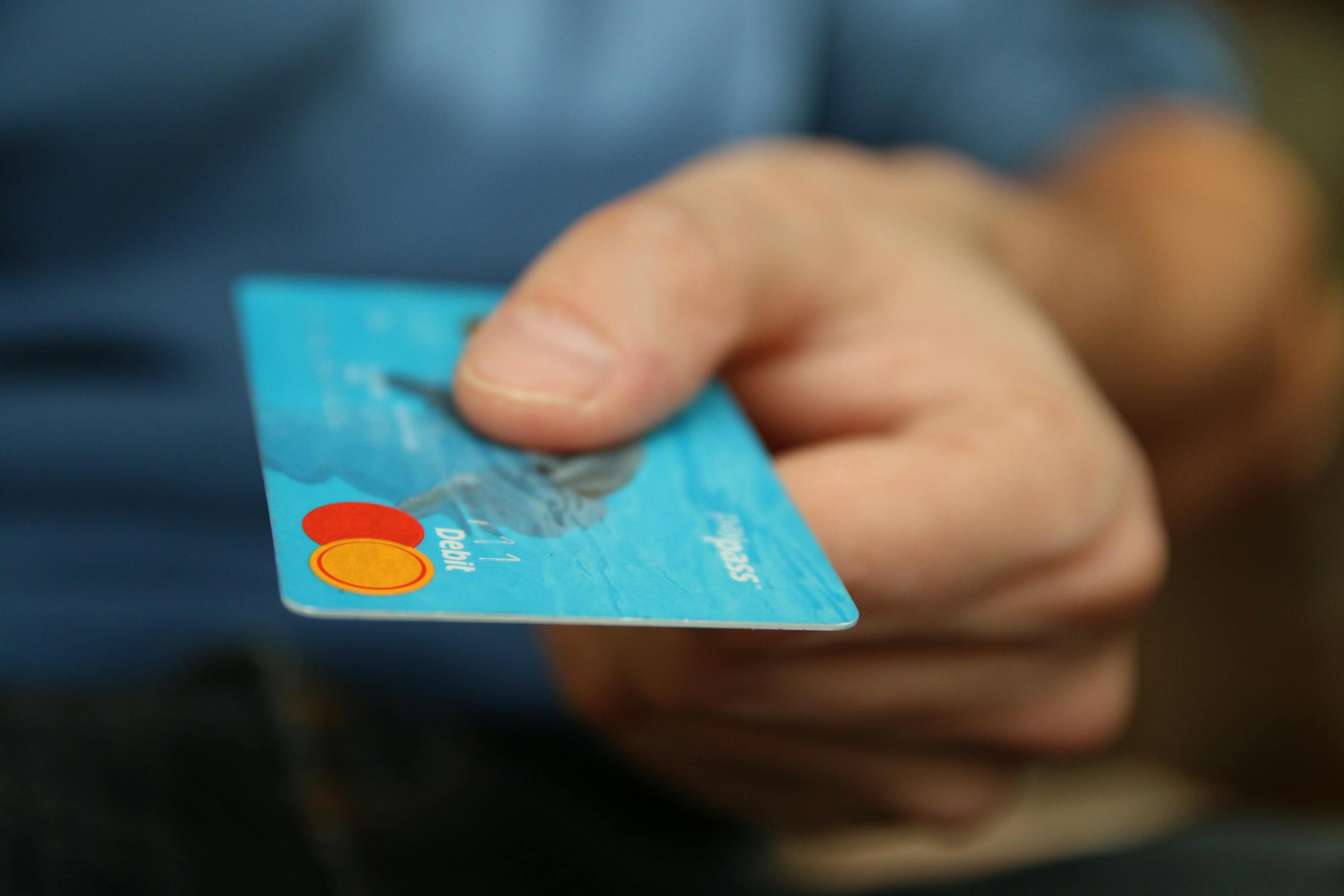
Our recommendations are built on rock-solid experience.
- We've reviewed 70+ digital finance apps and online banks
- We've made 100's of card transactions
- Our writers have been testing providers since 2013
Other Monito Guides and Reviews on Top Multi Currency Cards

Why Trust Monito?
You’re probably all too familiar with the often outrageous cost of sending money abroad. After facing this frustration themselves back in 2013, co-founders François, Laurent, and Pascal launched a real-time comparison engine to compare the best money transfer services across the globe. Today, Monito’s award-winning comparisons, reviews, and guides are trusted by around 8 million people each year and our recommendations are backed by millions of pricing data points and dozens of expert tests — all allowing you to make the savviest decisions with confidence.
Monito is trusted by 15+ million users across the globe.
Monito's experts spend hours researching and testing services so that you don't have to.
Our recommendations are always unbiased and independent.
- Argentina
- Australia
- Brasil
- Česko
- Canada
- Deutschland
- España
- France
- India
- Italia
- Magyarország
- Malaysia
- Nederland
- New Zealand
- Österreich
- Polska
- Portugal
- România
- Schweiz
- Singapore
- United Kingdom
- United States
- 繁體中文 (香港)
- 简体中文 (中国)
The 5 Best Travel Cards for Europe 2024
Europe is one of the top destinations for Australians heading on holiday - with year round attractions depending on whether you’re looking for a beach break, ski trip, or simply some time to eat, drink and soak up the culture. No matter what you’re off to Europe for, you’ll need to pay for things while you’re there. This guide walks through our picks of 5 of the best travel cards available for Australians heading to Europe, with a look at their features, benefits and drawbacks.
5 best travel cards to use in Europe
- Wise - debit card
- Revolut - debit card
- Travelex - prepaid card
- 28 Degrees Platinum - credit card
- Bankwest Zero Platinum Mastercard - credit card
Wise is our pick for travel debit card for Europe
With this card:
- Convert Aussie dollars to Euros at the mid-market exchange rate
- It's very easy to set up and order
- You can receive foreign currency into a multi-currency account linked to the card
- You can transfer money to a bank account overseas
It's not all good news though
- There is a 1.75% ATM withdrawal fee when you withdraw over $350 during a month
- It takes 7-14 days for delivery
Click here to see the full list of cards and how Wise compares

Read the full review
What are different types of travel cards?
It can be tricky working out which is the best travel card to use in Europe.
The fact is, the best one for you will really depend on what you need from the card you're using. We've listed what we think are three of the best travel money cards you can use while you're in Europe.
They can be either prepaid, debit or credit cards designed specially for overseas use. You can use travel cards to make purchases online, in stores and to withdraw money at ATMs. There are 3 popular types:
Travel Debit Cards
Prepaid travel cards, travel credit cards.
Let's have a look at each one.
Debit Cards offer the convenience of a credit card, but work differently. They draw money directly from your bank account when you make a purchase. It's designed for everyday money transactions and means that you're not accumulating debt.
If you have spending issues, it's a better option to use your debit card whenever possible. This is because it will prevent you from falling into credit card debt. And for daily purchases, we think a debit card can help you stick to your travel budget, because you can't overdraw money from your account.
Generally, we recommend having the combination of a travel debit and travel credit card for safety, flexibility and convenience on your trip.
Wise - travel debit card for Europe
The Wise card offers a flexible way to pay and make withdrawals with most European currencies covered for holding and exchange. You’ll be able to order your card for a low one time fee, with no ongoing costs to worry about.
Whether you’re spending in euros, British pounds, or any of the other 40+ currencies supported, you’ll get the mid-market exchange rate when you switch from AUD, with low fees from 0.43%. Exchange your AUD to the currency or currencies you need in advance, or just let the card handle the conversion at the point of payment for extra convenience.
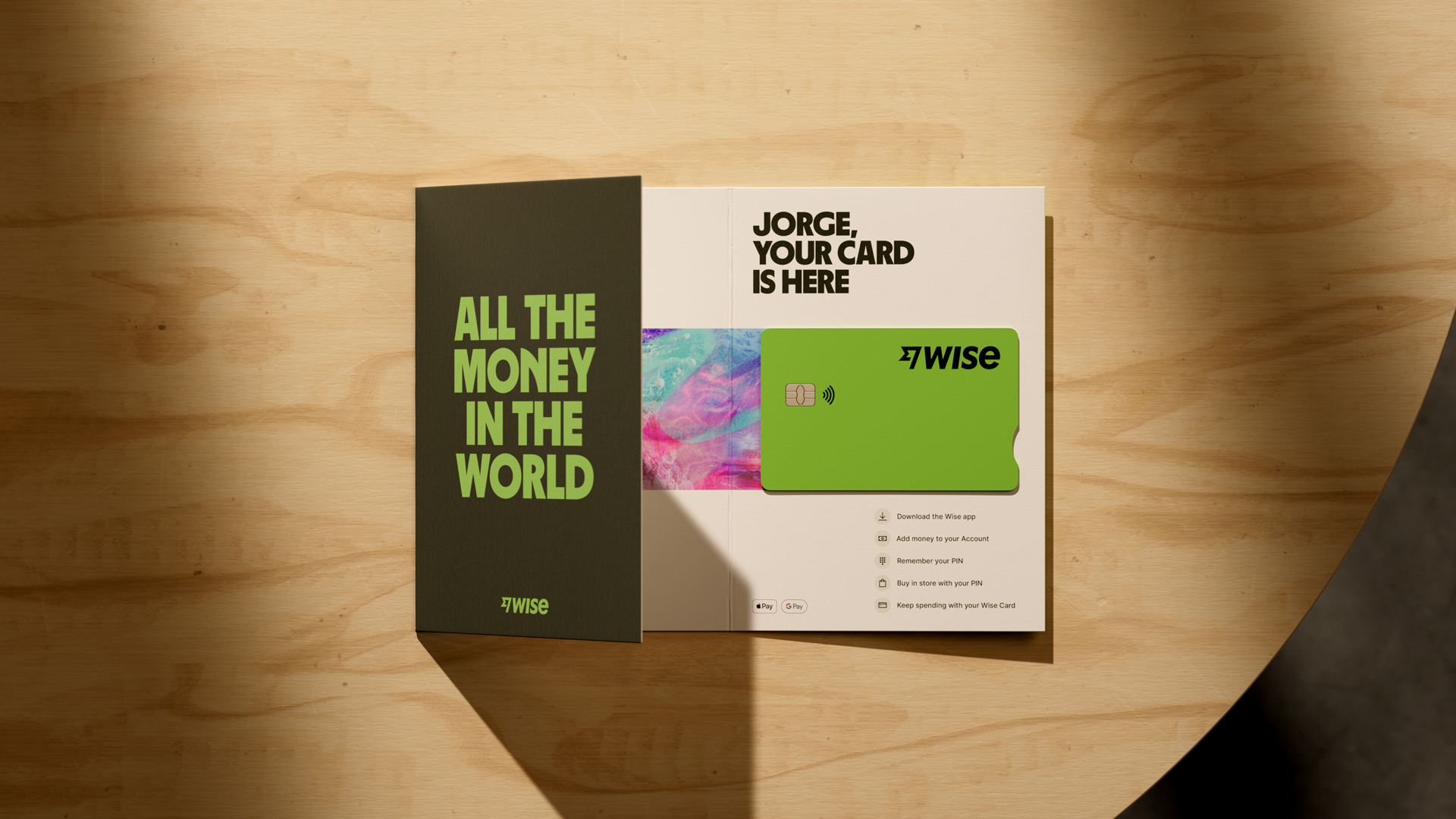
- No annual fee, hidden transaction fees, exchange rate markups
- No minimum balance requirements
- Allows you to make payments and withdrawals wherever you are in the world in over 40 currencies
- Local bank account details in Australia (AUD), the UK (GBP), the USA (USD), Europe (EUR) and New Zealand (NZD)
- It takes 7-14 business days to receive the card
- Can't always access local technical support depending on where you are
- Free cash withdrawals limited to under $350 every 30 days
- Only currently available in the US, UK, Europe, Australia and New Zealand
Revolut - prepaid travel card for Europe
The Revolut prepaid travel card lets you pick the account and card type that suits your personal needs and preferences. Go for a Standard plan with no monthly fee to pay, or upgrade to one of the higher tier account options with ongoing costs, which unlock extra features and benefits. Whichever card you pick you can spend in 150+ countries and get some no fee ATM withdrawals and currency conversion which uses the mid-market rate. Fair usage fees apply once you’ve used your account plan no-fee limit for a particular transaction type.
Click here to see the full list of cards and how Revolut compares
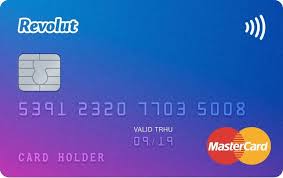
- Very easy to use app
- Free to set up
- No hidden fees or exchange rate mark-ups (except on weekends)
- You can use it to transfer money to a bank account overseas
- Additional fees for using the card on a weekend
- 2% ATM fee once you withdraw more than $350 in any 30 day period
- 3-4 business days before you receive your card
- Ongoing subscription fee for Premium and Metal cards
For prepaid cards, you're able to load the card with a set amount of money in the currencies you need. Ideally you do this before your trip, but often you can reload them as well.
Most prepaid travel cards allow for multiple currencies to be loaded onto the card. So it's important to know what currency you'll be using on your travels. Airlines also offer prepaid cards so the money you spend can earn you reward points.
Depending on where you're visiting, there might be better local alternatives available. Check out our lists of the best prepaid cards available in the USA and UK .
With prepaid travel cards you need to be careful. They can have numerous fees and charges, which can make it more expensive than other options. But if you're organised and travelling to multiple cities a prepaid travel card is a good option.
Travelex - prepaid travel card for Europe
The Travelex travel money card can be a convenient pick if you’re in a hurry as you can walk into a Travelex store and get one in just a few minutes. Just take along a suitable ID document, to get your card and account before you travel. You’ll be able to hold and exchange 10 major currencies, which covers euros and pounds. Bear in mind that exchange rates may include a markup - and other European currencies aren’t supported for holding or exchange so while you’ll be able to spend in a selection of other currencies, you won’t be able to buy them in advance to lock in a rate and set your travel budget.
Click here to see the full list of cards and how Travelex compares
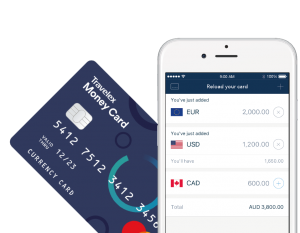
- Supports 10 major global currencies for holding and exchange
- Get your card online or in person for extra convenience
- No Travelex fee to spend or make an ATM withdrawal
- Some fee free ways to top up your card balance are available
- Exchange rates are likely to include a markup on the mid-market rate
- Fees may apply when you buy or top up your card
- Relatively low number of supported currencies
- Account closure and inactivity fees may apply
Credit cards have obviously been around for a long time. But now there are specialised travel credit cards. Generally, these cards give you longer to pay back what you've spent but the interest rates after this time can be quite high.
The main advantage with credit cards are the reward points you get in return for your customer loyalty when you spend. But it only works if you pay off the balance in full each month.
Credit cards are great to use for car hire, restaurants and accommodation - larger expenses that are easier for you to pay back over time. Some services only take credit cards to hold purchases so they can definitely be handy while you're travelling.
28 Degrees - travel credit card for Europe
- There are no annual fees
- No overseas purchase fee or currency conversion fee
- You get 55 days interest free on purchases
- Access to free 24/7 concierge service
- Emergency card replacement worldwide
The 28 Degrees Platinum Mastercard has additional benefits including shoppers and repayments benefits cover.
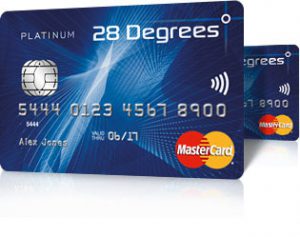
- Can have 9 additional cardholders
- No overseas purchase fee, or currency conversion fee
- No foreign transaction fee
- Free Replacement Card
- High interest rates after the initial 55 days
- Minimum credit limit is $6,000
- No introductory offers or rewards
Bankwest Zero Platinum Mastercard - travel credit card for Europe
The Bankwest Zero Platinum Mastercard has no annual fee to pay, and no foreign transaction fee either. That can make it a good option if you’d prefer to spend using a credit card and then pay off your travel bills later. There’s even a buy now, pay later which may let you split the costs of some eligible purchases into 4 payments with no extra interest to pay. Bear in mind that some fees and costs do apply to this card, particularly if you want to make ATM withdrawals, or if you’d prefer not to pay your bill off in full every month.
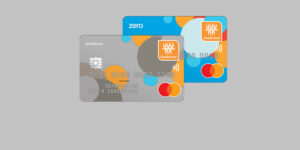
- No annual fee to pay
- No Bankwest foreign transaction fee
- Some complimentary travel insurance available for card holders
- Can be used as a payment guarantee, such as when renting a car or checking into a hotel
- Interest applies if you don’t pay your bill in full every period
- Cash advance fee of 3%, and a higher rate of interest compared to card spending
- 6,000 AUD minimum credit limit
- Subject to eligibility requirements and credit checks
FAQ - 5 best travel cards for Europe
Which card is better to use in Europe?
The best card for Europe will depend on exactly where you’re heading and how you like to manage your money. Using a travel debit card or travel prepaid card like Wise travel card or Revolut can be a handy way to hold, exchange, spend and manage your money across a selection of major European currencies, offering flexibility and low costs.
What's the best prepaid card to use in Europe?
There’s no single best prepaid card for Europe, but picking one which covers all the currencies you’ll need is essential. Bear in mind that there are many other European currencies aside from pounds and euros - choose a card which has a broad range of supported currencies for convenience. Wise supports 40+ currencies, while Revolut has 25+ currencies, making either of these a good place to start your research.
Can I use my Australian debit card in Europe?
You can use your Australian debit card in Europe anywhere the network - often Visa or Mastercard - is supported. Bear in mind that you may need to tell your bank you’re planning to travel, to avoid your card being frozen for security reasons. Double check if your debit card has a foreign transaction fee to pay - if it does, using a specialist travel card can mean you pay less overall when you spend in foreign currencies.
What is the best way to pay when travelling in Europe?
Having a selection of ways to pay whenever you travel is a good idea. You may choose to carry some local cash, some AUD for exchange, your Australian debit card and a specialist travel credit or debit card, for example. This should mean you’re covered - even if you find a merchant which can’t accept your preferred payment method.
Which debit card has no fees in Europe?
A travel card from a provider like Wise, Revolut or Travelex lets you hold a foreign currency balance and spend it with no extra fee. Each card has its own features and fees so you’ll need to compare a few to decide which is best for your specific needs.
Is Visa or Mastercard better for Europe?
Both Visa and Mastercard are very widely accepted in Europe. Look out for the symbol displayed on ATMs or at payment terminals in stores.
Need to know more about travelling to Europe?
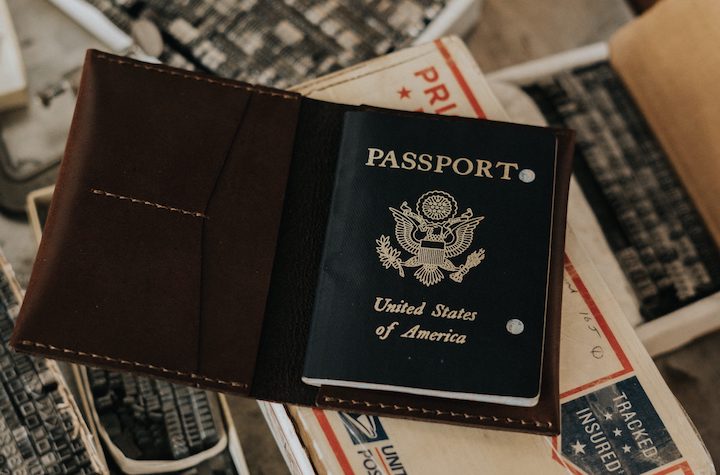
Passports, Visas and Vaccinations

How Much Things Cost in Europe
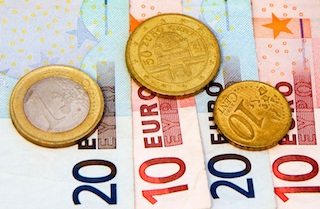

Currency in Europe
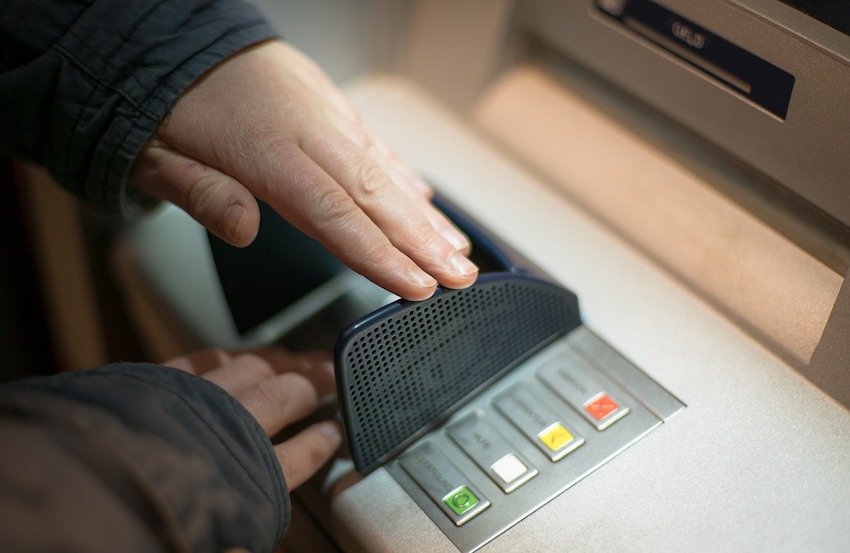
Banks, ATMs & Currency Exchange
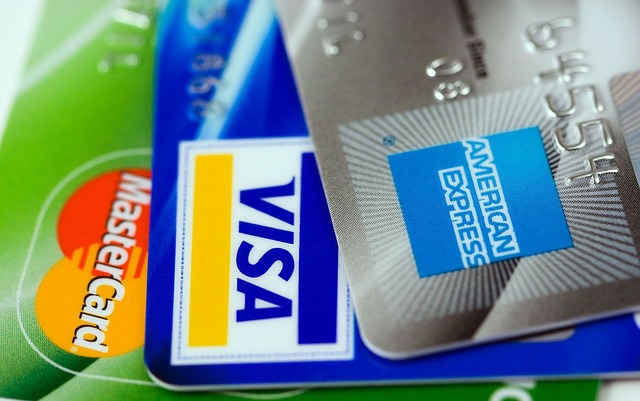
The Best Cards to Use in Europe

7 Common Travel Money Traps to Avoid in Europe
Editorial note: We may not cover every product in this category. For more information, see our Editorial guidelines .
The 5 best travel money cards for europe in 2024.
Europe is one of Australia’s favourite destinations and with all its attractions, weather and food it's not hard to see why thousands of Australians each year.
In Europe you are likely to pay for accommodation, food, transport and entertainment as well as withdraw cash from ATMs with your card.
We have compared a large number of the best travel cards and have summarised their best points.

Best 5 Travel Money Cards for Europe:
- Wise Multi Currency Card for best exchange rates
- Revolut for low fees
- Travelex Money Card - Best all rounder
- Bankwest Breeze Platinum Credit Card for lowest interest rate
- Macquarie Transaction Debit Card for a card you can use in Australia too
Wise Multi Currency Prepaid Card - Best Exchange Rates
- 40+ currencies available
- Best exchange rates globally
- One of the lowest conversion fee on the market
- No international transaction fees
- No annual or monthly fees
- Extremely low costs to send money overseas

Wise Travel Card
- Cross currency conversion fees are between 0.24–3.69%. AUD to USD, EUR or GBP was 0.42%, which is one of the lowest on the market
- Free cash withdrawals up to $350 every 30 days. However after that, Wise charge a fixed fee of $1.50 per transaction + 1.75%
- Daily ATM withdrawal is $2,700
- Issue up to 3 virtual cards for temporary usage
- It takes between 7 to 14 business days to receive your card
- Can be used wherever MasterCard is accepted
The Wise Travel Card is a prime selection for travelers embarking on a European adventure. It offers over 40 currencies at the intermarket exchange rate, which is the cheapest rate globally. In addition you can buy goods online from overseas with no transaction fee plus get the best exchange rate. However if you use ATMs frequently this is not the card to use due to the fees. Finally Wise Travel Card lets you transfer money to an overseas bank account with extremely low fees and the best exchange rate.
Revolut - Low Fees
- 30+ currencies available
- One of the best exchange rates globally
- No annual or monthly fees for standard membership
- No initial card fee
- Instant access to a range of cryptocurrencies

Read our Revolut Card Review
Revolut Travel Card
- No fee ATM withdrawals up to A$350, or 5 ATM withdrawals, whichever comes first, per rolling 30 day period and 2% of withdrawal amount (minimum charge of A$1.50) after that
- Exchanging currency on the weekend can incur a 1% mark-up fee
- Fees on international money transfers were introduced in April 2021.
- Can be used wherever Visa is accepted
The Revolut Travel Card is a decent option for those who travel a lot as it offers over 30 currencies at a great exchange rate, which is the cheapest rate globally. However if you exchange currency on the weekend you can incur a one-percent mark-up fee. In addition they have introduced fees for international transfers. Finally if you use ATMs frequently this is not the card to use due to the fees.
Travelex Money Card - Best All Rounder
Best features.
- Unlimited free ATM withdrawals
- 24/7 Emergency Assistance
- Initial and replacement card are free
- Lock in up to 10 currencies

Read our Travelex Money Card Review
Travelex Money Card
- Minimum load of $100 and maximum load of $100,000
- Can be used wherever Mastercard is accepted
- Fees include a $10 closure fee, $5 for an additional card and $4 inactivity monthly fee.
- While Travelex don't charge ATM fees, some ATM operators may charge their own fees.
- Currencies that can be loaded are AU$, US$, EU€, GB£, NZ$, TH฿, CA$, HK$, JP¥, SG$
- If your card is lost or stolen you can access cash in your account through Moneygram or Western Union agents, with no charge
- Boingo hotspots offer free wifi and you can look at their number of free hotspots per country on this map
The Travelex Money Card is a good all-rounder no matter if you are heading to the romantic streets of Paris, the historic sites of Rome, or the lively atmosphere of Barcelona.
You can use it to take money out of the ATM, for merchant purchases like restaurants and even for online shopping in foreign currency. While the exchange rates aren't as good as Wise or Revolut, the support network if the card is lost or stolen is very good. This advantage can be notably beneficial when journeying through the diverse countries of Europe.
Bankwest Breeze Platinum Credit Card - Lowest Interest Rate
- Lowest interest rate at 9.90%
- No international transaction fees on purchases
- Up to 55 days interest free on purchases
- Low annual fee
- Complimentary international travel insurance

Bankwest Breeze Platinum Credit Card
- Free annual fee first year, then $69 annual fee
- Free international travel insurance that includes the basics but does not cover cancellation costs, pre existing conditions and travellers over 80
- $6,000 minimum credit card
- 0% p.a. on purchases and balance transfers for the first 15 months, then reverts to 9.90%
- 21.99% interest rate on purchases and cash advances
- Cash advance fee of the higher of $4 or 2% of cash advance
The Bankwest Breeze Platinum is a great no frills credit card that offers ‘no foreign transaction fees’ and the lowest interest rate on the market, at 9.90%. These two factors alone will save you hundreds of dollars when travelling throughout Europe.
In addition it has a low annual fee and complimentary international travel insurance. Finally for its price point it is a great value credit card that will be accepted most places in Europe.
Macquarie Transaction Debit Card
- No ATM fees overseas or ATM fees in Australia
- No monthly fees or initial card fees
- No foreign transaction fee
- Contactless limit with no PIN up to $200 per transaction
- Joint accounts available

Macquarie Transaction Account Debit Card
- Simple and easy to work out costs for account
- Can be used in Australia as an EFTPOS card
- Instant transfers can be made using PayID and OSKO
- Works with Apple Pay, Google Pay, Fitbit and Garmin
- Available to 14 year olds and older
- Easily lock and unlock your card in the app if your card is lost or stolen
- Multi award winning account including Mozo Best Everyday Savings for 2021
- $2,000 daily limit for ATM withdrawals
- Exchange rates are MasterCard exchange rates, which are normally 2% - 6%+ the market rate
- Get discounts of up to 10% on eGift cards to use at over 50 leading retailers
- Added security with a mobile app that sends actionable push notifications for you to approve or deny online transactions and account activity
- Tools for spending each time you make a transaction, it’s automatically categorised into groups such as groceries, travel, leisure or technology. In addition you can see how you're spending at a glance and over time.
If you want a debit card you can use in Australia or in Europe without paying fees at ATMs then the Macquarie Bank Transaction debit card is a good fit. It has no foreign transaction fees, no ATM fees in Australia or overseas and no monthly fees. In addition the only fee you will pay is the currency conversion charged by Mastercard.
The debit card works in Australia and the contactless limit is $200, which is super handy. It also works with Apple Pay, Google Pay, Fitbit and Garmin. Finally it has tools to help you track your spending, can be given to teenagers over 14 and is easy to lock or unlock your card through the app if lost or stolen.
Learn more about the best credit, debit and prepaid cards for travel

Best Travel Credit Cards

Best Prepaid International Cards

The best travel card for Europe does not charge for international transactions, has a very competitive currency exchange rate for Euro, does not charge for cash withdrawals at ATMs and you are able to use it within Australia as well. We suggest taking at least one credit card, like the BankWest Platinum Breeze or the ING One Low Rate and one debit card linked to foreign currencies at competitive rates like the Wise Multi Currency and Citibank Plus Global Currency . In addition we recommend taking a back up ATM card like the Macquarie Transaction debit card to reduce the cost of ATM withdrawals around Europe.
Yes you should, ordering euro from S Money will be cheaper than withdrawing money from an ATM overseas. In fact, taking both cash and a card can be a great way to bring money to Europe . It is also more convenient to have cash on you before you arrive, one less thing to do in the airport when you arrive. Finally it's handy to have cash to tip, for smaller purchases or transport.
Debit cards, prepaid cards and credit cards with Mastercard or Visa can be used in Europe in most places. Similar to Australia, American Express is also accepted but not as frequently, due to the costs American Express places on the seller. Best to avoid other types of cards as they might not be accepted.
Yes you can place Euros on a prepaid travel card or you can have your debit account linked to currency accounts like with Wise and Citibank . Most prepaid travel cards have hefty fees including initial card, loading, reloading, inactivity and ATM fees so while they are handy, there are cheaper alternatives on the market.
Yes Mastercard debit cards work in Europe and are one of the two cards most commonly accepted throughout Europe. If the ATM has a Mastercard, Cirrus or Maestro logo on it, two different coloured circles overlapping you can withdraw local currency with your Mastercard debit card.
As a general rule, working out how much spending money to take to Europe depends on where you go and your type of travel. If you travel on a budget to Eastern Europe it can cost $60 - $100 a day. If you travel in the middle range throughout Europe it can cost $250 - $300 per day. Finally if you travel with luxury throughout Europe it can cost anywhere from $400 per day.
Yes it is better to use a debit card in Europe as it is cheaper than using funds from a credit card which have an interest rate typically of 20%, they are accepted in most places for payment, they are secure and you can transfer money into the account easily overseas.
More Travel Card Guides
Learn more about the best travel money cards for your holiday destination.
ASIC regulated
Like all reputable money exchanges, we are registered with AUSTRAC and regulated by the Australian Securities and Investment Commission (ASIC).

S Money complies with the relevant laws pertaining to privacy, anti-money laundering and counter-terrorism finance. This means you are required to provide I.D. when you place an order. It also means the order must be paid for by the same person ordering the currency and you must show your identification again when receiving your order.
- Home ›
- Currency Cards ›
- Euro Currency Cards
Compare euro currency cards
Euro currency cards are a low-fee, prepaid alternative to cash and traditional bank cards that are designed to be used in the eurozone
Euro currency cards
Euro currency cards are a unique kind of payment method which are designed to be more cost-effective than a standard UK credit or debit card when used in the eurozone. They are intended to be a modern replacement to Travellers Cheques as they are more secure, more widely accepted and can be used anywhere in the world that accepts VISA or MasterCard.
Like traditional bank cards they are made of high-quality, durable plastic and come complete with chip-and-pin protection as standard which means they are just as secure as a regular bank card. However, unlike traditional bank cards, prepaid cards are not linked to your bank account in any way which means you cannot go overdrawn with them; you simply 'load' Euros onto your card over the phone or internet (paying using your regular bank card) and top your balance up when it runs out. There are no hidden charges and no surprise bills when you return home from Europe.
Most prepaid Euro cards are free to purchase (a minimum initial top-up of around £50 is usually required) and are suitable for everyone from solo travellers and couples to families and large groups. Multiple cards can be linked to the same account which is perfect for families on a budget and any left-over currency at the end of your trip can be converted back into Pounds, usually at the rate you bought it at.
- Once you sign up for a card you'll be asked to create an account on the card issuer's website. This is where you'll login to check your account balance and top your card up whenever you need to. The first time you sign up you'll need to load a small amount of Euros on to your prepaid card and this balance will show up on your account straight away.
- Your prepaid card will arrive in the post usually within a couple of working days of placing your order. It will contain a PIN number and instructions on how to activate the card which usually involves logging back into your account and following a few instructions. Once activated your card is ready to use. TIP: You can change your PIN by taking your prepaid card to any UK cash machine just like a regular bank card.
- You can use your prepaid card just like you would a regular UK bank card to pay for goods and services or withdraw cash anywhere in the Eurozone that accepts VISA or MasterCard. Any time you make a payment on the card, the amount (plus any applicable fees) will be deducted from your card balance. Once your balance reaches zero, you cannot spend any more until you top it up. As the card is not linked to your bank account in any way, you cannot go overdrawn; there is no overdraft or credit facility associated with your prepaid card and no monthly statements.
- You can top-up or reload your prepaid card at any time with your standard UK debit or credit card by logging back into your online account. Most cards also allow you to top-up by phone, SMS and via the Post Office. Once you have reloaded your card your Euros will be available almost instantly so if you top-up in your hotel room you can withdraw the cash by the time you leave your room!
- If you need any help or advice, or if your card is lost or stolen you can ring the 24-hour helpline provided by your card issuer. Remember: unlike cash your Euros cannot be stolen from a prepaid card as your balance is chip-and-pin protected.
What really makes prepaid Euro cards worthwhile is how much cheaper they are to use in the Eurozone compared with regular bank cards. To understand why, first you have to understand a little bit about how the charges can add up when you use your regular bank card in Europe.
Firstly there's the exchange rate. If you use your UK bank card in any of the Eurozone countries your bank will convert your British Pounds into Euros using their daily exchange rate at the time you make the payment. High street banks are notorious for having some of the worst exchange rates because they don't have to be competitive. Your bank will also add on transaction or point-of-sale fees which can be a fixed amount or a percentage of the total transaction value. That's a fee you have to pay your bank every time you use your card or withdraw money in Europe!
So how are prepaid Euro cards different? Well most card providers we compare offer far better exchange rates than UK banks and you'll be able to plainly see the exchange rate on offer well before you top your card up each time so you know exactly how many Euros you'll be getting. As for the transaction fees - well there aren't any. There's no catch. For most suppliers you can use your card as often as you like in Europe without incurring any additional costs (although some cards do charge, and some charge for ATM withdrawals so make sure you check out our comparisons above).
Benefits of using a euro card
- Cheaper to use in the eurozone than a typical UK credit or debit card
- Your balance is preloaded in advance so you can't go overdrawn or run up debt
- Top-up any time from your UK bank account or debit card
- Chip-and-pin protection and contactless payments
Limitations of using a euro card
- Taking cash can still be cheaper
- Not all merchants accept prepaid cards, especially petrol stations and smaller businesses
- Some ATMs may still charge you for withdrawing cash
- Can be expensive to use in the UK and outside of the eurozone
We use cookies to improve your experience on our website. Please confirm you're happy to receive these cookies in line with our Privacy & Cookie Policy .
MASTERCARD BENEFIT INQUIRIES
Within the U.S.: 1-800-Mastercard (1-800-627-8372) | Outside the U.S.: Mastercard Global Service Phone Numbers
Availability of insurance benefits on your card may vary by card issuer. Please refer to your issuing financial institution for complete insurance benefit coverage terms, conditions and exclusions.
*Card registration required. Certain exceptions apply. Click here for terms and conditions .
†Requirements may vary. See card packaging for details or contact card issuer.
- Skip navigation
- Find a branch
- Help and support
Popular searches
- Track a parcel
- Travel money
- Travel insurance
- Drop and Go
Log into your account
- Credit cards
- International money transfer
- Junior ISAs
Travel and Insurance
- Car and van insurance
- Gadget insurance
- Home insurance
- Pet insurance
- Travel Money Card
- Parcels Online
For further information about the Horizon IT Scandal, please visit our corporate website
- Travel Money
The savvy way to pay on holiday Travel Money Card
A safe-to-use, prepaid, reloadable, multi-currency card that’s not linked to your bank account
No charges when you spend abroad*
Make contactless, Apple Pay and Google Pay™ payments
Manage your account and top up or freeze your card easily with our Travel app
*No charges when you spend abroad using an available balance of a local currency supported by the card.
Why get a Travel Money Card?
Carry up to 22 currencies safely.
Take one secure, prepaid Mastercard® away with you that holds multiple currencies (see ‘common questions’ for which).
Accepted in over 36 million locations worldwide
Use it wherever you see the Mastercard Acceptance Mark – millions of shops, restaurants and bars in more than 200 countries.
Manage your card with our travel app
Top up, manage or freeze your card, transfer funds between currencies, view your PIN and more all in our free Travel app .
Safe and secure holiday spending
Manage your holiday funds on a Travel Money Card with our free travel app. Top it up, freeze it, swap currencies, view your PIN and more.
It’s simple to get started
No need to carry lots of cash abroad. Order a Travel Money Card today for smart, secure holiday spending.
Order your card
Order online, via the app or pick one up in branch and load it with any of the 22 currencies it holds.
Activate it
Cards ordered online and in-app should arrive within 2-3 working days. Activate it by following the instructions in your welcome letter.
It’s ready to use
Spend in 36 million locations worldwide, and top up and manage your card in the app or online.
What is Post Office Travel Money Card?
Discover how easy our Travel Money Card makes managing your spending aboard
New-look travel app out now
Our revamped travel app’s out now. It makes buying, topping up and managing Travel Money Cards with up to 22 currencies a breeze. Buying and accessing Travel Insurance on the move effortless. And it puts holiday extras like airport hotels, lounge access and more at your fingertips. All with an improved user experience. Find out what’s changed .
Order a Travel Money Card
Order your card online – or through the Post Office travel app – and we'll deliver it within 2-3 days. Just activate it and go.
Need it quick? Visit a branch
Pick up a Travel Money Card instantly at your local Post Office. Bring a valid passport, UK driving licence or valid EEA card as ID.
Need some help?
We’re here to help you make the most of your Travel Money Card – or put your mind at ease if it’s been lost or stolen
Lost or stolen card?
Please immediately call: 020 7937 0280
Available 24/7
To read our FAQs, manage your card or contact us about using it:
Visit our Travel Money Card support page
Common questions
How can i order my card.
There are three ways that you able to obtain a Travel Money Card, each very simple.
Please note, you must be a UK resident over the age of 18 to obtain a Travel Monday Card.
- Via our travel app: you can order and store up to three Travel Money Cards in our free travel app . Delivery will take 2-3 working days.
- Online: follow our application process to order your card online. Your card will take 2-3 working days to be delivered. Once it arrives you can link it to our Travel app to manage on the go.
- In branch: simply find a nearby Post Office branch and pop in to get your Travel Money Card there. Please remember to take a valid passport, UK driving licence or a valid EEA card in order to obtain your card, and you can take it away the same day.
Whichever way you choose to order your card, don't forget to activate it once it arrives. Full details of how to activate your card will be provided in your welcome letter, to which your card will be attached if it’s been sent in the post.
How do I use my card?
Travel Money Card is enabled with both chip & PIN and contactless, so you can make larger and lower-value value payments with it respectively. For convenience, you can also add it to Apple Pay and Google Wallet.
You can load it with between £50 and £5,000 (see more on load limits below). You can use it to pay wherever the Mastercard Acceptance Mark is displayed. And you can withdraw cash with it at over 2 million ATMs worldwide (charges and fees apply, see 'Are there top-up limits?' below).
Your Travel Money Card is completely separate from your bank account so it’s a safe and secure way to pay while you’re abroad.
How can I manage my card?
After you've activated your card, you can manage it using our travel app or via a web browser. You can check your recent transactions, view your PIN, transfer funds between different currency ‘wallets’, top up your card, freeze your card and more.
Our travel app brings together travel essentials including holiday money, travel insurance and more together in one place. As well as managing your Travel Money Card you can buy cover for your trip, access your policy documents on the move, book extras such as airport parking and hotels, and find your nearest ATM while overseas or Post Office branches here in the UK.
Which currencies can I use?
The Post Office Travel Money Card can be loaded with up to 22 currencies at any one time. You can top up funds on the card and transfer currencies between different ‘wallets’ for these currencies easily in our travel app or online.
Currencies available:
- EUR – euro
- USD – US dollar
- AUD – Australian dollar
- AED - UAE dirham
- CAD – Canadian dollar
- CHF – Swiss franc
- CNY – Chinese yuan
- CZK – Czech koruna
- DKK – Danish krone
- GBP – pound sterling
- HKD – Hong Kong dollar
- HUF – Hungarian forint
- JPY – Japanese yen
- NOK – Norwegian krone
- NZD – New Zealand dollar
- PLN – Polish zloty
- SAR – Saudi riyal
- SEK – Swedish Krona
- SGD – Singapore dollar
- THB – Thai baht
- TRY – Turkish lira
- ZAR – South African rand
What are the charges and fees?
Full details of our charges and fees can be found in our Travel Money Card terms and conditions .
The Post Office Travel Money Card is intended for use in the countries where the national currency is the same as the currencies on your card. If the currency falls outside of any of the 22 we offer on your card, you’ll be charged a cross-border fee. For example, using your card in Brazil will incur a cross-border fee because we do not offer the Brazilian real as a currency.
Cross border fees are set at 3% and are only applicable when you use your currency in a country other than the ones we offer.
For more information on cross border fees, please visit our cross border payment page.
There are no charges when using your card in retailers in the country of the currency on the card. This means that a €20 purchase in Spain would cost you €20 and will be deducted from your euro balance.
To avoid unnecessary charges to your card, wherever asked, you should always choose to pay for goods or withdraw cash in the currencies of your card. For example, if you are using the card in Spain you should always choose to pay in euro if offered a choice; choosing to pay in sterling (GBP) in this example would allow the merchant to exchange your transaction from euro to sterling. This would mean your transaction has gone through two exchange rate conversions, which will increase the total cost of your transaction.
For loads in Great British pounds, a load commission fee of 1.5% will apply (min £3, max £50). A monthly maintenance fee of £2 will be deducted from your balance 12 months after your card expires. Expiration dates can be found on your TMC; all cards are valid for up to 3 years.
A cash withdrawal fee will be charged when withdrawing cash from a UK Post Office branch or from any ATM globally that accepts Mastercard.
We have listed all available currencies and their associated withdrawal limits and charges below:
EUR – euro Max daily cash withdrawal: 450 EUR Withdrawal charge: 2 EUR
USD – US dollar Max daily cash withdrawal: 500 USD Withdrawal charge: 2.5 USD
AED – UAE dirham Max daily cash withdrawal: 1,700 AED Withdrawal charge: 8.5 AED
AUD – Australian dollar Max daily cash withdrawal: 700 AUD Withdrawal charge: 3 AUD
CAD – Canadian dollar Max daily cash withdrawal: 600 CAD Withdrawal charge: 3 CAD
CHF – Swiss franc Max daily cash withdrawal: 500 CHF Withdrawal charge: 2.5 CHF
CNY – Chinese yuan Max daily cash withdrawal: 2,500 CNY Withdrawal charge: 15 CNY
CZK – Czech koruna Max daily cash withdrawal: 9,000 CZK Withdrawal charge: 50 CZK
DKK – Danish krone Max daily cash withdrawal: 2,500 DKK Withdrawal charge: 12.50 DKK
GBP – Great British pound Max daily cash withdrawal: 300 GBP Withdrawal charge: 1.5 GBP
HKD – Hong Kong dollar Max daily cash withdrawal: 3,000 HKD Withdrawal charge: 15 HKD
HUF – Hungarian forint Max daily cash withdrawal: 110,000 HUF Withdrawal charge: 600 HUF
JPY – Japanese yen Max daily cash withdrawal: 40,000 JPY Withdrawal charge: 200 JPY
NOK – Norwegian krone Max daily cash withdrawal: 3,250 NOK Withdrawal charge: 20 NOK
NZD – New Zealand dollar Max daily cash withdrawal: 750 NZD Withdrawal charge: 3.5 NZD
PLN – Polish zloty Max daily cash withdrawal: 1,700 PLN Withdrawal charge: 8.5 PLN
SAR – Saudi riyal Max daily cash withdrawal: 1,500 SAR Withdrawal charge: 7.50 SAR
SEK – Swedish Krona Max daily cash withdrawal: 3,500 SEK Withdrawal charge: 20 SEK
SGD – Singapore dollar Max daily cash withdrawal: 500 SGD Withdrawal charge: 3 SGD
THB – Thai baht Max daily cash withdrawal: 17,000 THB Withdrawal charge: 80 THB
TRY – Turkish lira Max daily cash withdrawal: 1,500 TRY Withdrawal charge: 7 TRY
ZAR – South African rand Max daily cash withdrawal: 6,500 ZAR Withdrawal charge: 30 ZAR
Are there top-up limits?
Yes, all currencies have top-up limits and balances. See full information below, which is applicable to all currencies available on the Travel Money Card.
- Top-up limit: minimum £50 – maximum £5,000
- Maximum balance: £10,000 at any time, with a maximum annual balance of £30,000
- Read more Travel Money Card FAQs
Other related services
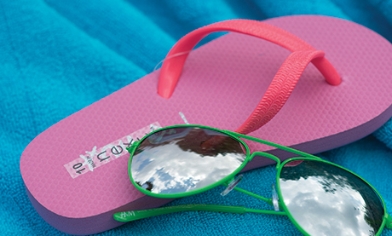
Travelling abroad? These tips will help you get sorted with your foreign ...

We all look forward to our holidays. Unfortunately, though, more and more ...

From European hotspots to far-flung destinations, UK travellers are making ...

Hoi An in Vietnam is still the best-value long haul destination for UK ...
Our annual survey of European ski resorts compares local prices for adults and ...

The nation needs a holiday. And, with the summer season already underway, new ...

If you’re driving in Europe this year, Andorra’s your best bet for the cheapest ...

One of the joys of summer are the many music festivals playing across the ...
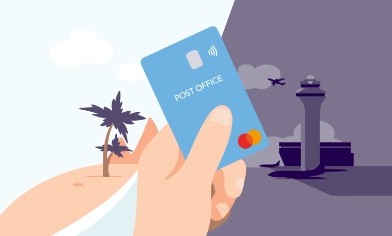
Prepaid currency cards are a secure way to make purchases on trips abroad. They ...

Thinking of heading off to Europe for a quick city break, but don’t want to ...

Knowing how much to tip in a café, restaurant, taxi or for another service can ...

Post Office Travel Money unveils the first Islands in the Sun Holiday Barometer ...
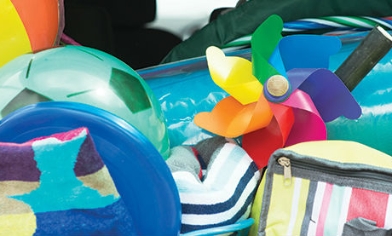
To avoid currency conversion fees abroad, always choose ‘local currency’ ...

Kickstarting your festive prep with a short getaway this year? The Post Office ...

Eastern Europe leads the way for the best value city breaks this year. And ...

Long-haul destinations offer the best value for UK holidaymakers this year, ...
Find out more information by reading the Post Office Travel Money Card's terms and conditions .
Post Office Travel Money Card is an electronic money product issued by First Rate Exchange Services Ltd pursuant to license by Mastercard International. First Rate Exchange Services Ltd, a company registered in England and Wales with number 4287490 whose registered office is Great West House, Great West Road, Brentford, TW8 9DF, (Financial Services Register No. 900412). Mastercard is a registered trademark, and the circles design is a trademark of Mastercard International Incorporated.
Post Office and the Post Office logo are registered trademarks of Post Office Limited.
Post Office Limited is registered in England and Wales. Registered number 2154540. Registered office: 100 Wood Street, London, EC2V 7ER.
These details can be checked on the Financial Services Register by visiting the Financial Conduct Authority website and searching by Firm Reference Number (FRN).
Traveling to Europe using points and miles in 2024

May 23, 2024 • 17 min read

Read on for the best miles and points conversion to stay at the iconic Waldorf Astoria Amsterdam © Waldorf Astoria Amsterdam
This series of articles about credit cards, points and miles, and budgeting for travel is brought to you in partnership with The Points Guy .
Advertiser Disclosure: This post contains references to products from one or more of our advertisers. We may receive compensation when you click on links to those products. Terms apply to the offers listed on this page. This relationship may impact how and where links appear on this site. This site does not include all financial companies or all available financial offers.
All information about the American Express® Green Card*, the Citi Premier® Card, the Marriott Bonvoy Bountiful™ credit card, the Hilton Honors Aspire Card, the World of Hyatt Credit Card, the World of Hyatt Business Credit Card, and the Hilton Honors American Express Business Card has been collected independently by Lonely Planet. These cards are not available through Lonely Planet.
Since pandemic-era travel restrictions have lifted, tourists have been flocking to Europe all summer. While summer has always been a popular time to visit cities like London, Rome and Paris, this resurgence in travel demand has been unprecedented. If you’re looking to travel to Europe at any time this year or next, you’ll see a marked increase in airfare and hotel prices. An excellent workaround for dealing with steep prices is by collecting points and miles .
Not only can you save money by using points for your next trip to Europe, you can fly in premium cabins and stay at some of the best hotels in the world. All at a fraction of the cost of a budget vacation. Here’s everything you need to know about traveling to Europe using points and miles.
How to make a travel budget using points and miles

The cheapest award flights to Europe
Flying to Europe can be expensive, but points and miles can save you a substantial sum – especially if you’re flexible with your travel dates. The cheapest award flights to Europe are typically found during off-peak travel season (typically winter and early spring). Airlines like American, British Airways and Air France offer discounted award tickets during these times, saving you money and points.
But even if you hope to travel in the summer, you can find decent award space by booking far in advance. Meanwhile, Lufthansa has been known to release award space within 1-2 weeks of travel for business and first-class travel. Knowing these things can make booking flights to Europe with miles a less stressful experience.
Here’s a look at the cheapest award flights to Europe and how to earn enough miles for a redemption:
- Cheapest economy class ticket to Europe: From 20,000 Virgin Atlantic Flying Club miles round-trip to the UK.
- Cheapest business class ticket to Europe: From 68,000 Iberia Avios round-trip to Spain.
- Cheapest first-class ticket to Europe: 165,000 ANA Mileage Club miles round-trip.
The best travel credit cards

Award space to London is usually plentiful due to a slightly annoying reason: fuel surcharges. Airlines like Virgin Atlantic and British Airways add these pesky fees to flights passing through UK airports like London Heathrow (LHR). Fuel surcharges are egregiously high on business and first-class tickets (which can go well over $1,500 round-trip). However, they’re not too bad on economy flights or flights originating in cities outside of the UK.
A popular way to avoid fuel surcharges is by flying into London and then returning from Paris, which has much more reasonable taxes. Virgin Atlantic offers the cheapest economy flights to London, at just 20,000 miles roundtrip.
If you want to upgrade to business class, All Nippon Airways (ANA) Mileage Club offers a bargain of just 88,000 miles round-trip. A first-class ticket will set you back 165,000 ANA miles. At this rate, you’re better off sticking to business class for a flatbed seat that offers plenty of comfort on the transatlantic flight. Here are the best rates by class for travel to London:
- Economy class: From 20,000 Virgin Atlantic Flying Club miles round-trip
- Business class: 88,000 ANA Mileage Club miles round-trip
- First class: 165,000 ANA miles round-trip

How to earn miles for a flight to London
Virgin Atlantic miles are easy to earn, thanks to transfer partnerships with American Express Membership Rewards, Bilt Rewards, Capital One, Chase Ultimate Rewards and the Citi ThankYou rewards.
If you’re not a Bilt cardholder, you can transfer points to Flying Club at a 1:1 ratio with the following credit cards:
- The Business Platinum Card® from American Express *: Earn 150,000 Membership Rewards® points after you spend $20,000 in eligible purchases on the Card within the first 3 months of Card Membership.
- Platinum Card® from American Express *: Earn 80,000 points after spending $8,000 in the first six months of card membership.
- Capital One Venture Rewards Credit Card: Earn 75,000 bonus miles once you spend $4,000 on purchases within the first three months from account opening.
- Capital One Venture X Rewards Credit Card: Earn 75,000 bonus miles once you spend $4,000 on purchases within the first three months from account opening.
- American Express® Business Gold Card *: Earn 70,000 points after spending $10,000 within the first three months of card membership.
- American Express® Gold Card *: Earn 60,000 points after spending $6,000 within the first six months of card membership.
- American Express® Green Card: Earn 40,000 points after spending $3,000 within the first six months of card membership.
- Citi Premier® Card: Earn 60,000 points after spending $4,000 in the first three months of account opening.
- Chase Sapphire Reserve® : Earn 60,000 bonus points after you spend $4,000 on purchases in the first 3 months from account opening. That's $900 toward travel when you redeem through Chase Travel℠.
- Chase Sapphire Preferred® Card : Earn 60,000 bonus points after you spend $4,000 on purchases in the first 3 months from account opening. That's $750 when you redeem through Chase Travel℠.
Meanwhile, ANA Mileage Club only partners with Amex Membership Rewards. You can transfer points earned from the Amex Platinum, Gold and Green cards.
Best travel credit cards for hotels

Between the art scene of Barcelona and the sandy beaches of Majorca, Spain has much to offer travelers. Iberia Airways offers one of the best ways to fly to Spain on points and miles, with direct flights to Madrid and Barcelona.
Iberia Airways offers especially great deals on air to Spain in the off-season. Even award tickets are incredibly affordable, with round-trip business class costing the same as most airlines charge for one-way business class awards.
- Economy class: From 34,000 Avios round-trip on Iberia Airways
- Business class: From 68,000 Avios round-trip on Iberia Airways
How to travel to Spain using points and miles
How to earn miles for a flight to Madrid
The Iberia Plus program earns Avios, which you can transfer from your British Airways or Aer Lingus account. This also means you get access to a vast network of transferable currencies you can tap into to earn those miles. Iberia Plus is a 1:1 transfer partner of Amex Membership Rewards and Chase Ultimate Rewards, so you can earn points from cards like the Amex Gold or Chase Sapphire Preferred.
Iberia also has its own Iberia Visa Signature® Card, which has a $95 annual fee and features a time offer to earn 85,000 Avios after you spend $5,000 on purchases within the first three months of account opening. Earn an additional 25,000 Avios after you spend $20,000 within the first 12 months of account opening.
How to use points and miles to save money on travel

If you have dreams of visiting a fashion-forward city , exploring the picturesque countryside and refilling your water bottle in a historical fountain (just kidding, don’t do that!), then Rome is a great place to start your European adventure . Thanks to ANA Mileage Club, you can fly to Rome on a Star Alliance carrier like United or Lufthansa from just 55,000 miles round-trip. Business class is your best bet at 88,000 miles. It’s worth noting that ANA doesn’t allow one-way award redemptions, so you need the total miles for a round-trip to be able to book these flights.
- Economy class: 55,000 ANA miles round-trip
- Business class: 88,000 ANA miles round-trip
How to travel to Italy with points and miles

How to earn miles for a flight to Rome
You can earn enough miles for a round-trip flight to Rome by transferring Amex Membership Rewards points to ANA MileageClub at a 1:1 ratio. With the welcome bonus from The Business Platinum Card® from American Express , you can cover up to two round-trip economy class tickets or one business class.
Best credit cards for international travel

Amsterdam or Paris
Thanks to Air France and KLM’s joint Flying Blue loyalty program, using points for flights to Amsterdam and Paris is fairly easy. The program prices out award flights differently based on distance, but there isn’t a massive difference in price for West Coast vs. East Coast flights. Flying Blue’s rates are already affordable, but you can save even more with Promo Rewards . These discounted fares are updated monthly and offer savings as high as 50%.
- Economy class: From 30,000 miles round-trip
- Business class: From 113,000 miles round-trip
10 incredible branded hotels that have boutique hotel vibes
How to earn miles for a flight to Amsterdam or Paris
Transfer partnerships allow you to stock up on Flying Blue miles for award tickets to Amsterdam or Paris. Flying Blue is a 1:1 transfer partner of Amex Membership Rewards, Bilt Rewards, Capital One, Chase Ultimate Rewards and Citi ThankYou rewards. With the right credit card, you can easily cover at least one round-trip flight with points – maybe even two.
- The Business Platinum Card® from American Express : Earn 150,000 Membership Rewards® points after you spend $20,000 in eligible purchases on the Card within the first 3 months of Card Membership.
- The Platinum Card® from American Express : Earn 80,000 points after spending $8,000 in the first six months of card membership.
- Capital One Venture Rewards Credit Card : Earn 75,000 bonus miles once you spend $4,000 on purchases within the first three months from account opening.
- Capital One Venture X Rewards Credit Card : Earn 75,000 bonus miles once you spend $4,000 on purchases within the first three months from account opening.
- American Express Business Gold Card : Earn 70,000 points after spending $10,000 within the first three months of card membership.
- American Express® Gold Card : Earn 60,000 points after spending $6,000 within the first six months of card membership.
Should you book travel with cash or points?
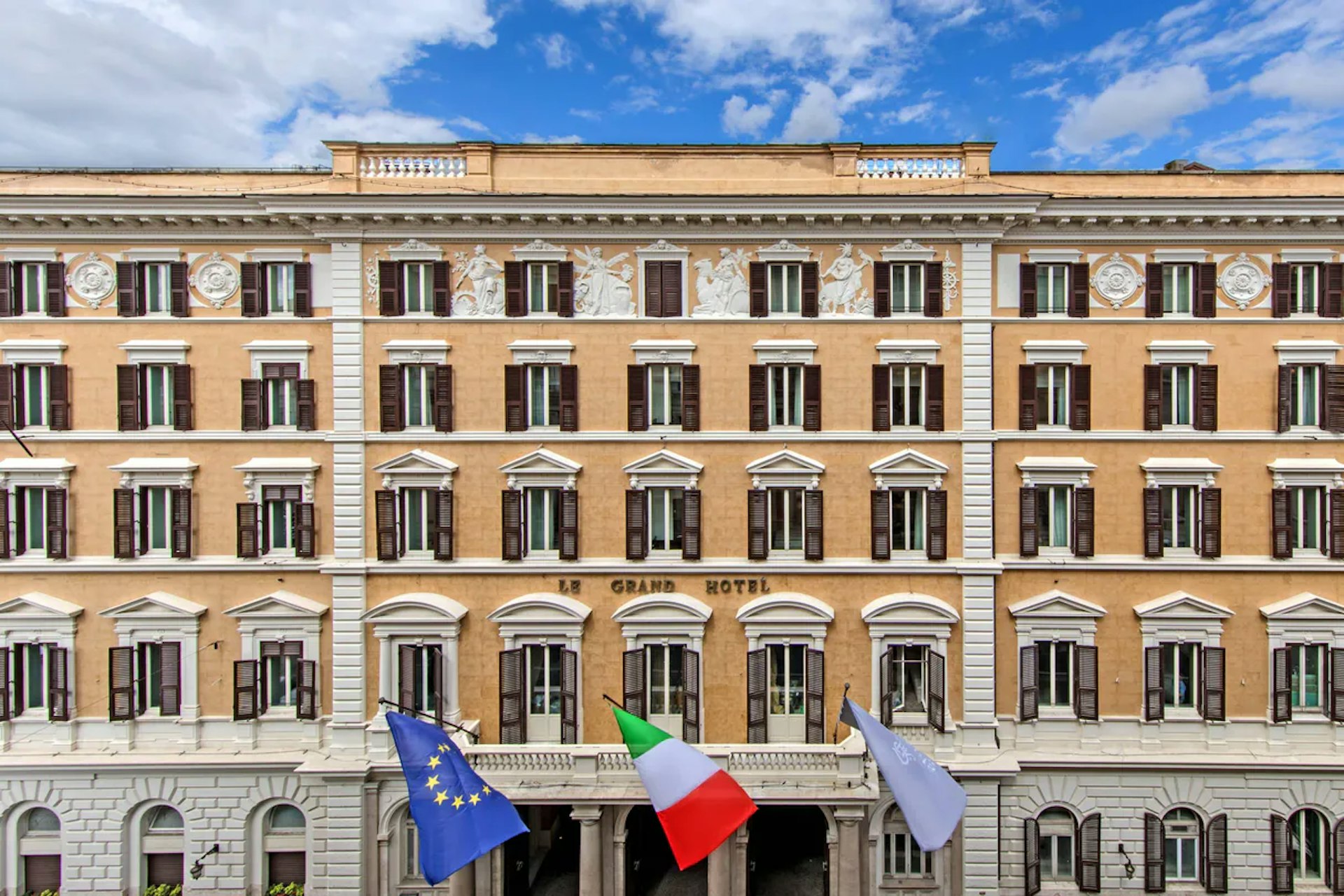
Iconic hotels you can book with points
Now that airfare is covered, it’s time to focus on hotels. No matter where you travel to in Europe, the continent has a massive hotel market, so you’re bound to find something for your budget and travel needs. When using points, you can’t go wrong with IHG, Hilton, Hyatt and Marriott – these chains have thousands of properties worldwide, including some of the most iconic hotels in Europe. These hotels are especially attainable if you sign up for a new hotel credit card .
If you’re looking for an upscale experience and don’t want to pay the high price tag, there are lots of exceptional hotels to choose from. Here’s a look at some of the most upscale European hotels you can book with points and miles :
10 amazing hotels around the world you can book with points

The St. Pancras Renaissance Hotel London
The St. Pancras Renaissance Hotel London is a landmark property that opened in 1873 and combines grandeur with convenient access to everything the city offers. The hotel shares a building with St. Pancras station, from which you can hop a train to Paris, Brussels, Amsterdam and more. It’s an ideal base to explore Europe without stepping foot in an airport.
Guests can enjoy resort-like amenities, including the on-site gym, spa, pool, sauna and steam room. For 44,000 Marriott points per night, you can book a Deluxe room in the Barlow House wing with soundproof windows and beds fitted with down mattress toppers and Egyptian cotton sheets.
The best credit cards with no international fees
How to earn points
You can earn Marriott points by transferring them from Amex Membership Rewards or Chase Ultimate Rewards. Marriott also has six different credit cards offering welcome bonuses as high as 150,000 bonus points:
- Marriott Bonvoy Brilliant™ American Express® Card : Earn 95,000 Marriott Bonvoy bonus points after you use your new Card to make $6,000 in purchases within the first 6 months of Card Membership.
- Marriott Bonvoy Bevy™ American Express® Card : Earn 85,000 Marriott Bonvoy bonus points after you use your new Card to make $5,000 in purchases within the first 6 months of Card Membership.
- Marriott Bonvoy Bountiful™ credit card: Earn 85,000 points after you spend $4,000 in the first three months from account opening.
- Marriott Bonvoy Business® American Express® Card : Limited Time Offer: Earn 5 Free Night Awards, valued at up to 50K points each for eligible stays. Offer ends 7/10. Resort fees & terms apply.
- Marriott Bonvoy Boundless® Credit Card : Earn 3 Free Night Awards (each night valued up to 50,000 points) after spending $3,000 on purchases in your first three months from account opening.
- Marriott Bonvoy Bold® credit card : Earn 30,000 bonus points after you spend $1,000 on eligible purchases within the first six months from account opening. Plus, earn up to 14X total points for every $1 spent at thousands of hotels participating in Marriott Bonvoy.

St. Regis Rome
When in Rome, you might want a hotel that provides the opulence of a 19th-century palazzo. The award-winning St Regis Rome delivers just that. Built in 1894, the hotel offers lavishly appointed rooms with marble bathrooms, nightly turndown and butler service. Rates start at 80,000 points per night. While steep, you can save 20% by taking advantage of Marriott’s fifth-night free benefit on award stays.
The hotel is within walking distance of the National Gallery of Ancient Art and close to tourist attractions like the Trevi Fountain and Colosseum.
Best credit cards for adventure travel

The Principal Madrid
Hyatt has some great hotel options in Madrid at very reasonable rates. The Principal Madrid Hotel hotel is a great choice, with rooms starting at just 21,000 Hyatt points per night. Standard rooms are relatively small at just over 200 sqft but boast plenty of natural light. The Principal has the distinction of being the first five-star hotel in Madrid’s famed Gran Via, close to shopping and tourist attractions.
How to travel to Greece using points and miles
How to earn Hyatt points
Earning Hyatt points for a stay at The Principal Madrid is as easy as transferring Bilt or Chase Ultimate Rewards points. You can also top up your account with one of Hyatt’s co-branded credit cards, which can cover up to three nights at this hotel.
- World of Hyatt Credit Card: Earn 30,000 Bonus Points after you spend $3,000 on purchases in your first 3 months from account opening. Plus, up to 30,000 More Bonus Points by earning 2 Bonus Points total per $1 spent in the first 6 months from account opening on purchases that normally earn 1 Bonus Point, on up to $15,000 spent.
- World of Hyatt Business Credit Card: Earn 60,000 Bonus Points after you spend $5,000 on purchases in your first 3 months from account opening. Plus, up to 9 points total per $1 spent at Hyatt - 4 Bonus Points per $1 on qualified purchases at Hyatt hotels & up to 5 Base Points per $1 from Hyatt as a World of Hyatt member.
American Express Membership Rewards vs. Chase Ultimate Rewards

Waldorf Astoria Amsterdam
The Waldorf Amsterdam strikes a perfect balance between embodying the city’s renowned charm in a luxury setting. The hotel is located inside six 17th and 18th-century palaces on the UNESCO heritage site of Herengracht Canal. The hotel boasts two Michelin-starred restaurants and provides easy access to the city’s main tourist attractions, like the Hermitage Museum. Guests are also just a 12-minute tram ride from the city’s Centraal Station, making getting around the city and to the airport easy.
Award rates start at 110,000 Hilton points per night for a Superior Room, which is spacious by European standards at 301-355 sqft. Superior rooms are outfitted with Egyptian cotton sheets, a marble bathroom and large windows to let in lots of natural light.
The best credit cards for Global Entry
How to earn Hilton points
The Hilton Honors program is a 1:2 transfer partner of Amex Membership Rewards, though this isn’t the best use of points. A better way to boost your Hilton points balance is by acquiring one of the Hilton credit cards. You can piece together multiple nights with the welcome bonus, annual spending bonus and generous earn rates on everyday spending. You’ll even get valuable elite status perks that can translate to room upgrades, complimentary breakfast and other enhancements to your travel experience.
- Hilton Honors Aspire Card: Earn 150,000 Hilton Honors bonus points after you spend $6,000 in purchases in the first six months of card membership.
- Hilton Honors American Express Surpass® Card : Earn 130,000 Hilton Honors Bonus Points plus a Free Night Reward after you spend $3,000 in purchases on the Hilton Honors American Express Surpass® Card in the first 6 months of Card Membership. Offer Ends 7/31/2024.
- The Hilton Honors American Express Business Card: Welcome Offer: Earn 130,000 Hilton Honors Bonus Points after you spend $6,000 in purchases on the Hilton Honors Business Card within the first six months of Card Membership.
- Hilton Honors American Express Card : Earn 70,000 Hilton Honors Bonus Points plus a Free Night Reward after you spend $2,000 in purchases on the Hilton Honors American Express Card in the first 6 months of Card Membership. Offer Ends 7/31/2024.
Related: Best credit cards for road trips

Intercontinental Paris Le Grand
Paris has no shortage of exceptional hotels that provide grandeur and comfort. If you’re looking for old-world luxury with a historical background, you can’t go wrong with the Intercontinental Paris Le Grand. This hotel opened in 1862 (sans the Intercontinental brand) and hosts the famed Café de la Paix, the preferred hangout spot for renowned writers like Ernest Hemingway and Victor Hugo.
Award rates at this iconic property start at 66,000 IHG One points per night for a 215 sqft. “Cozy room” with a courtyard view. The hotel boasts an excellent location across the street from Palais Garnier and a short walk to tourist hot spots like the Jardin des Tuileries and the Louvre. Whether it’s your first time visiting The City of Lights or your tenth, the Intercontinental Paris Le Grand is an excellent choice for a point stay.
Best travel credit cards for foodies
How to earn IHG points
If you want to earn enough IHG points for a stay at the Intercontinental Paris Le Grand, you can transfer Chase Ultimate Rewards or Bilt points to IHG at a 1:1 ratio. Alternatively, you can pick up an IHG credit card to earn 140,000 points and elite status perks. Cardholders also get the fourth night free on award stays, along with other valuable perks.
- IHG One Rewards Premier Credit Card : Earn 140,000 Bonus Points after spending $3,000 on purchases in the first 3 months from account opening.
- IHG One Rewards Premier Business Credit Card : Earn 140,000 Bonus Points after spending $4,000 on purchases in the first 3 months from account opening.

Bottom line
Travel to Europe is more expensive than ever, but you can reduce the cost with points and miles. A European vacation can fit anyone's budget with flights starting at just 20,000 miles round-trip and luxury hotel options like the Intercontinental Paris Le Grand.
How to get major perks at global events and concerts with your credit card
* Eligibility and Benefit level varies by Card. Terms, Conditions, and Limitations Apply. Please visit americanexpress.com/benefitsguide for more details. Underwritten by Amex Assurance Company.
Terms apply to American Express benefits and offers. Enrollment may be required for select American Express benefits and offers. Visit americanexpress.com to learn more.
Editorial disclaimer: Opinions expressed here are the author’s alone, not those of any bank, credit card issuer, airline or hotel chain, and have not been reviewed, approved or otherwise endorsed by any of these entities.
This article was first published Sep 8, 2023 and updated May 23, 2024.
Explore related stories

Local Voices
Jun 13, 2024 • 8 min read
How can you ever choose between two incredible destinations such as Italy and Croatia? Let our experts convince you which one is perfect for you.

Jun 12, 2024 • 12 min read

May 30, 2024 • 10 min read

May 27, 2024 • 6 min read

May 21, 2024 • 8 min read

May 21, 2024 • 11 min read

May 20, 2024 • 5 min read

May 3, 2024 • 6 min read

Apr 30, 2024 • 4 min read

Apr 19, 2024 • 10 min read
Security Alert May 17, 2024
Worldwide caution, update may 10, 2024, information for u.s. citizens in the middle east.
- Travel Advisories |
- Contact Us |
- MyTravelGov |
Find U.S. Embassies & Consulates
Travel.state.gov, congressional liaison, special issuance agency, u.s. passports, international travel, intercountry adoption, international parental child abduction, records and authentications, popular links, travel advisories, mytravelgov, stay connected, legal resources, legal information, info for u.s. law enforcement, replace or certify documents, before you go.
Learn About Your Destination
While Abroad
Emergencies
Share this page:
Crisis and Disaster Abroad: Be Ready
What the Department of State Can and Can't Do in a Crisis
Information for U.S. Citizens about a U.S. Government-Assisted Evacuation
Traveler's Checklist
Safety and Security Messaging
Best Practices for Traveler Safety
Staying Connected
Smart Traveler Enrollment Program (STEP)
Traveler Information
LGBTQI+ Travelers
Adventure Travel
High-Risk Area Travelers
Travelers with Dual Nationality
Journalist Travelers
Faith-Based Travelers
Pilgrimage Travelers (Hajj and Umrah)
U.S. Students Abroad
Cruise Ship Passengers
Women Travelers
Travelers with Disabilities
Older Travelers
U.S. Volunteers Abroad
Travelers with Pets
Travelers With Firearms
Travel Agents
Travel Safety - Race and Ethnicity
U.S. Travelers in Europe's Schengen Area
Your Health Abroad
Insurance Coverage Overseas
Driving and Road Safety Abroad
Customs and Import Restrictions
Information for U.S. Citizens in Russia – Travel Options Out of Russia
Lodging Safety
Paris 2024 Olympics and Paralympics
In Europe's Schengen area , your passport must be valid for at least six months at the time of your entry. At present, the Schengen area includes most European Union (EU) countries, except for Cyprus and Ireland.
If you are transiting through Canada or the United Kingdom (UK) enroute to the Schengen area : your passport must be valid for at least six months, even though Canada and the UK do not themselves have the six-month rule. If your passport will expire within six months, airlines may not let you board your onward flight to Europe.
Traveling in Europe
If you plan to travel in Europe, you need to know about the Schengen Borders Agreement, which allows you to move freely within a number of countries without border checks. Tourists, exchange students, and people visiting for business from certain countries, like the United States, can travel in the Schengen area for up to 90 days. The Schengen area includes most EU countries, except for Cyprus and Ireland. It also includes four non-EU countries: Iceland, Norway, Switzerland, and Liechtenstein.
Before you travel to the Schengen area, we recommend you do the following:
- Check the expiration date on your passport book carefully before traveling to Europe. Ensure your passport book is valid for at least six months when you enter the Schengen area. This is especially important for minors under age 16 as their passports are only valid for five years. In contrast, U.S. citizen adults aged 16 and older receive passports that are valid for 10 years.
- Always carry your passport book with you when traveling to another country in the Schengen area. Even if there is no border check at that time, officials may reinstate border controls without notice.
- Be prepared to explain your purpose of travel.
- Be prepared to provide proof of sufficient financial resources for the visit.
- Comply with other entry requirements for each country you will visit or transit.
On our Country Information pages , you can find passport validity requirements and other important information for your destination country. If your passport does not meet the Schengen requirements, you may be:
- Refused boarding by the airline at your point of origin or while transferring planes.
- Denied entry when you arrive in the Schengen area, regardless of how long you will stay.
An immigration official will determine if you qualify for visa-free entry to the Schengen area when you first cross any external Schengen border. You will have to present your passport at that time. The officer may deny your entry if you do not qualify.
You should also check passport validity requirements if traveling onward from the Schengen area to a country outside the Schengen area. You can find this information in our Country Information pages.
HOW LONG CAN I REMAIN?
- With a valid U.S. passport book, you can stay up to 90 days in the Schengen area for tourism or business during any 180-day period. You must wait an additional 90 days before applying to re-enter the Schengen area.
- If you plan to stay in the Schengen area longer than three months, contact the embassy of the country where you plan to spend the majority of your time and apply for a visa.
Countries in the Schengen area may reinstate temporary internal or external border control without notice. U.S. citizens should carry their U.S. passport book at all times when entering or leaving the Schengen area. They should also bring it when traveling between Schengen countries.
How can the U.S. government help me if border officials do not let me enter?
- We can give you the contact information of foreign embassies of the countries you wish to visit.
- We can provide information about hiring an English-speaking foreign attorney overseas if you choose to do so.
- Note: We cannot influence a foreign government’s decision about allowing you to enter. We cannot intervene in another country’s criminal or administrative procedures.
What countries are members of the Schengen Borders Agreement?
Click on the country name for more information.
Bulgaria (entering in March 2024)
Czech Republic
Liechtenstein
Netherlands
Romania (entering in March 2024)
Switzerland
Enroll in STEP

Subscribe to get up-to-date safety and security information and help us reach you in an emergency abroad.
Recommended Web Browsers: Microsoft Edge or Google Chrome.
Learn about your destination
Make two copies of all of your travel documents in case of emergency, and leave one with a trusted friend or relative.
External Link
You are about to leave travel.state.gov for an external website that is not maintained by the U.S. Department of State.
Links to external websites are provided as a convenience and should not be construed as an endorsement by the U.S. Department of State of the views or products contained therein. If you wish to remain on travel.state.gov, click the "cancel" message.
You are about to visit:
- Credit cards
- View all credit cards
- Banking guide
- Loans guide
- Insurance guide
- Personal finance
- View all personal finance
- Small business
- Small business guide
- View all taxes
The Guide to Travel Insurance for Trips to Europe

After spending seven years in the U.S. Air Force as an Arabic linguist, Carissa is now a freelance writer using points and miles to fund a four-year (and counting!) adventure. She previously worked as a reporter for The Points Guy. Her writing has since been featured in numerous publications, including Forbes, Business Insider, and The Balance. When she's not flying, you'll usually find her in a Priority Pass lounge somewhere, sipping tea and cursing slow Wi-Fi.

Many or all of the products featured here are from our partners who compensate us. This influences which products we write about and where and how the product appears on a page. However, this does not influence our evaluations. Our opinions are our own. Here is a list of our partners and here's how we make money .
Table of Contents
How travel insurance works
How to choose between travel insurance companies, best plans for health insurance while traveling in europe, other tips for travel and medical insurance in europe, which credit cards offer europe travel insurance, travel insurance for europe recapped.
Traveling abroad can be an exhilarating adventure, especially when you’re heading to Europe. Whether you’re in the mood for an eclair or want to take in the Colosseum, making your way over to Europe involves a lot of moving parts.
That’s why travel insurance can be so beneficial. With protections such as trip delay reimbursement and coverage for lost luggage, travel insurance can help make sure your trip stays smooth.
What’s more, several plans include travel health insurance in Europe, so you can worry less about whether that hike through the Alps is a good idea.
Let’s take a look at travel insurance in Europe as well as other coverage options for your vacations.
Because a lot of thought, money and effort go into planning and taking a vacation, protecting your investments (and yourself) with travel insurance can make the difference between an enjoyable memory and a disastrous anecdote you tell at mealtimes.
Travel insurance can cover a variety of things, including:
Accidental death insurance .
Baggage delay and lost luggage insurance .
Cancel for Any Reason insurance .
Emergency evacuation insurance .
Medical insurance .
Rental car insurance .
Trip cancellation insurance .
Trip delay insurance .
Trip interruption insurance .
Trip cancellation, trip delay, trip interruption and lost luggage insurance are all sources of protection when you travel, especially on airlines. These can reimburse you for nonrefundable expenses you miss out on due to covered delays, and may pay you back for costs you end up incurring (including lodging, meals, toiletries and clothing).
Although it’s possible to get standard health insurance for trips abroad, it’s much more common to get coverage for emergency care, which includes protections for unexpected injuries and illnesses.
Health insurance for European travel is usually included with a standard travel insurance policy, but there are plan limits and there may be deductibles.
It’s also possible to purchase medical-only travel insurance from certain providers if you aren’t interested in other trip protections.
» Learn more: How to find the best travel insurance
Before you start shopping for travel and medical insurance in Europe, evaluate the level of coverage you need based on your age, health, trip duration, destination and planned activities (some adventure sports aren't always covered). Compare plans from different providers, paying attention to coverage, benefits and prices.
Here's a short list of factors to consider:
The cost of the policy.
The limits of the plan.
Whether there are deductibles.
Whether the benefits are primary or secondary.
Where you’re going.
How long your trip is.
Whether you already have insurance that’ll cover you.
The types of activities you’ll be doing.
An insurance aggregator like InsureMyTrip or Squaremouth (a NerdWallet partner) can streamline your shopping experience. Be sure to also read reviews and ratings of individual travel insurance companies to get an idea of customer service and claim resolution processes.
» Learn more: The best travel insurance companies
To figure out the best plans for travel and health insurance in Europe, we generated quotes from multiple travel insurance companies using a test scenario. For this example, we used a 37-year-old Nevada resident traveling to Germany for 11 days with a $4,000 trip cost. Here are the winners.
GeoBlue’s Voyager Choice medical insurance for European travel sits head and shoulders above the rest for cost, at only $28.16.
That said, there's a reason it is so affordable. This plan offers coverage only for medical emergencies and lacks other trip protections. It is a good option if you want to supplement existing travel coverage (say via your credit card ) with more medical coverage.
$1 million in medical coverage.
$0 deductible.
Offers direct billing.
No trip protections.
Pre-existing condition coverage requires that you have domestic health insurance.
Can only purchase plans up to six months in advance of your trip.
» Learn more: Read our full GeoBlue travel insurance review
IMG’s iTravelInsured Travel SE’s comprehensive plan includes both trip protections and health insurance for Europe travel and rings in at just $135.36.
At this price point, it provides excellent primary coverage for medical insurance, offers rental car insurance and includes superior trip interruption reimbursement.
$250,000 in medical coverage.
$40,000 in rental car insurance.
Pre-existing conditions covered.
Travel delay reimbursement kicks in after 12 hours.
Baggage loss is capped at $250 per item and $1,500 total.
More expensive than other options.
» Learn more: Read our full review of IMG travel insurance
3. Detour Insurance
The Detour Insurance @The Edge insurance plan is aptly named. Costing $86.90, the plan offers a unique inclusion for the costs of search and rescue, which can provide peace of mind if you're participating in backcountry adventures.
$1 million limit for medical evacuation.
Coverage can be extended.
$10,000 for search and rescue.
No rental car insurance.
Pre-existing conditions not covered.
$50,000 limit for 24-hour accidental death and dismemberment (AD&D) coverage.
» Learn more: Is Cancel For Any Reason travel insurance worth it?
4. Trawick International
Trawick International’s Safe Travels Protect plan includes primary medical coverage as well as a wide range of trip protections. At $100.03, it even covers cancellations for medical reasons.
$25,000 in emergency medical coverage.
100% for both trip cancellation and trip interruption.
Medical quarantine coverage included.
$100 medical deductible.
$500 lost luggage limit (not a great fit if you are packing several valuables).
Doesn’t cover pre-existing conditions.
» Learn more: Read our full Trawick International review
Do you have a travel credit card ? Many of these cards offer complimentary travel insurance as a part of their benefits.
The plan you select may offer secondary coverage, but this matters only if you have existing insurance. In its absence, secondary coverage becomes primary.
Look at your existing health insurance policy. Some plans will provide emergency coverage for you when traveling internationally.
If you’re planning on heading for the Dolomites or other European mountains for winter sports, be sure that your travel insurance covers adventure activities; not all do. Travel insurance can rescue a ski or snowboard trip , but read the fine print to see what exclusions apply before you purchase a policy.
» Learn more: 5 tips before buying Schengen visa travel insurance
If you’re looking for insurance when traveling to Europe, you may already have it without knowing. Many travel credit cards offer complimentary travel insurance.
Available types of insurance can include rental car insurance, emergency medical insurance, trip cancellation reimbursement, lost luggage protection and trip delay insurance.
Here are some of the best credit cards for travel insurance:

on Chase's website

on American Express' website

• Trip delay: Up to $500 per ticket for delays more than 12 hours.
• Trip cancellation: Up to $10,000 per person and $20,000 per trip. Maximum benefit of $40,000 per 12-month period.
• Trip interruption: Up to $10,000 per person and $20,000 per trip. Maximum benefit of $40,000 per 12-month period.
• Baggage delay: Up to $100 per day for five days.
• Lost luggage: Up to $3,000 per passenger.
• Trip delay: Up to $500 per ticket for delays more than 6 hours.
• Trip delay: Up to $500 per trip for delays more than 6 hours.
• Trip cancellation: Up to $10,000 per trip. Maximum benefit of $20,000 per 12-month period.
• Trip interruption: Up to $10,000 per trip. Maximum benefit of $20,000 per 12-month period.
Terms apply.
• Trip delay: Up to $500 per passenger for delays more than 6 hours.
• Trip cancellation: Up to $2,000 per person for nonrefundable airline, bus, train or ferry tikets.
• Trip interruption: Up to $2,000 per person for nonrefundable airline, bus, train or ferry tikets.
• Lost or damaged luggage : Up to $3,000 per passenger.
» Learn more: How to choose a credit card for Europe travel
Staying safe is important during your trip to Europe. Health insurance for travel can make a difference, especially if you’re planning on doing anything adventurous. The same can be said for other trip protections, which reimburse you for covered expenses that you incur.
Insurance Benefit: Trip Delay Insurance
Up to $500 per Covered Trip that is delayed for more than 6 hours; and 2 claims per Eligible Card per 12 consecutive month period.
Eligibility and Benefit level varies by Card. Terms, Conditions and Limitations Apply.
Please visit americanexpress.com/benefitsguide for more details.
Underwritten by New Hampshire Insurance Company, an AIG Company.
Insurance Benefit: Trip Cancellation and Interruption Insurance
The maximum benefit amount for Trip Cancellation and Interruption Insurance is $10,000 per Covered Trip and $20,000 per Eligible Card per 12 consecutive month period.
Insurance Benefit: Baggage Insurance Plan
Baggage Insurance Plan coverage can be in effect for Covered Persons for eligible lost, damaged, or stolen Baggage during their travel on a Common Carrier Vehicle (e.g., plane, train, ship, or bus) when the Entire Fare for a ticket for the trip (one-way or round-trip) is charged to an Eligible Card. Coverage can be provided for up to $2,000 for checked Baggage and up to a combined maximum of $3,000 for checked and carry-on Baggage, in excess of coverage provided by the Common Carrier. The coverage is also subject to a $3,000 aggregate limit per Covered Trip. For New York State residents, there is a $2,000 per bag/suitcase limit for each Covered Person with a $10,000 aggregate maximum for all Covered Persons per Covered Trip.
Underwritten by AMEX Assurance Company.
How to maximize your rewards
You want a travel credit card that prioritizes what’s important to you. Here are some of the best travel credit cards of 2024 :
Flexibility, point transfers and a large bonus: Chase Sapphire Preferred® Card
No annual fee: Bank of America® Travel Rewards credit card
Flat-rate travel rewards: Capital One Venture Rewards Credit Card
Bonus travel rewards and high-end perks: Chase Sapphire Reserve®
Luxury perks: The Platinum Card® from American Express
Business travelers: Ink Business Preferred® Credit Card
1x-10x Earn 5x total points on flights and 10x total points on hotels and car rentals when you purchase travel through Chase Travel℠ immediately after the first $300 is spent on travel purchases annually. Earn 3x points on other travel and dining & 1 point per $1 spent on all other purchases.
60,000 Earn 60,000 bonus points after you spend $4,000 on purchases in the first 3 months from account opening. That's $900 toward travel when you redeem through Chase Travel℠.
1x-5x 5x on travel purchased through Chase Travel℠, 3x on dining, select streaming services and online groceries, 2x on all other travel purchases, 1x on all other purchases.
60,000 Earn 60,000 bonus points after you spend $4,000 on purchases in the first 3 months from account opening. That's $750 when you redeem through Chase Travel℠.

1x-2x Earn 2X points on Southwest® purchases. Earn 2X points on local transit and commuting, including rideshare. Earn 2X points on internet, cable, and phone services, and select streaming. Earn 1X points on all other purchases.
85,000 Earn 85,000 bonus points after spending $3,000 on purchases in the first 3 months from account opening.

EURO 2024: All you need to know
Saturday, June 15, 2024
Article summary
When is it? Where is it? Who's qualified? How does it work? All your UEFA EURO 2024 questions answered.
Article top media content

Article body
Where is euro 2024 being held .
Germany is hosting EURO 2024, having been chosen to stage the 17th edition of the UEFA European Championship at a UEFA Executive Committee meeting in Nyon on 27 September 2018. Türkiye was the only other nation that bid to hold UEFA EURO 2024. West Germany hosted the 1988 edition, but this is the first time Germany has staged the UEFA European Championship since reunification. The 2006 FIFA World Cup also took place in the country.
What are the dates for EURO 2024?
The UEFA EURO 2024 final tournament began on 14 June and runs until 14 July 2024. The group stage concludes on 26 June, with the knockout stage beginning on 29 June.
As the host nation, Germany were seeded in Group A and occupied position A1; they therefore played the opening match – a 5-1 win against Scotland – at the Munich Football Arena on Friday 14 June. Germany/West Germany have featured at every EURO since 1972. West Germany won the 1972 and 1980 editions, while the reunited Germany triumphed at EURO '96 .
Who qualified for EURO?
The draw for the final tournament was held in Hamburg on Saturday 2 December.
Group A : Germany, Scotland, Hungary, Switzerland Group B : Spain, Croatia, Italy, Albania Group C : Slovenia, Denmark, Serbia, England Group D : Poland*, Netherlands, Austria, France Group E : Belgium, Slovakia, Romania, Ukraine* Group F : Türkiye, Georgia*, Portugal, Czechia
* Qualified via play-offs
Sign up for a free MyUEFA account to watch live streams and on-demand content, play games and challenge your friends, win money-can’t-buy prizes, and apply for tickets to Europe’s biggest games.
What is the tournament format?
The format is the same as it was for UEFA EURO 2020 . The top two in each of the six final tournament groups proceed to the round of 16 along with the four best third-placed finishers.
Where and when will the final of EURO 2024 be played?
Berlin's Olympiastadion will stage the final on Sunday 14 July 2024.
What are the EURO 2024 host cities?
The ten venues chosen to host games at the tournament include nine of the stadiums used at the 2006 World Cup, plus the Düsseldorf Arena.
Uniquely, the Munich Football Arena is staging matches for the second EURO in succession; Bayern München's home ground was one of 11 arenas that held games during UEFA EURO 2020.
Host venues are as follows:
Berlin : Olympiastadion Berlin (current capacity: 71,000) Cologne : Cologne Stadium (43,000) Dortmund : BVB Stadion Dortmund (62,000) Dusseldorf : Düsseldorf Arena (47,000) Frankfurt : Frankfurt Arena (47,000) Gelsenkirchen : Arena AufSchalke (50,000) Hamburg : Volksparkstadion Hamburg (49,000) Leipzig : Leipzig Stadium (40,000) Munich : Munich Football Arena (66,000) Stuttgart : Stuttgart Arena (51,000)

When did EURO 2024 tickets go on sale?
The latest UEFA EURO 2024 ticketing information can be found here .
What sustainability measures are in place at EURO?
In line with increased societal expectations around football needing to accelerate action on social and environmental sustainability, the UEFA EURO 2024 tournament wants to lead by example through targeted measures and investments. The full Environmental, Social and Governance strategy can be found here .
Are there EURO 2024 fan zones in Germany?
Every host city will welcome supporters to dedicated fan zones with public viewing installations. Check out the event guide for each host city for further details on how to prepare for your EURO 2024 experience in Germany, whether you have a ticket or just want to soak up the atmosphere during the football festivities.

What is the best way to get around Germany?
Travelling by train and public transport is the most convenient and sustainable option to travel during the tournament. EURO 2024 ticket holders have access to discounted national and international train tickets, as well as a 36 Hour Travel Pass for public transport at no extra cost .
Is there an official EURO 2024 match ball?
FUSSBALLLIEBE, the Official Match Ball of UEFA EURO 2024, is being used during the final tournament . It was unveiled in November 2023 by UEFA and adidas at a special event in front of the Olympiastadion in Berlin. German for "love of football", FUSSBALLLIEBE features adidas Connected Ball Technology for the first time at a UEFA EURO.
Who is the EURO 2024 mascot?
The official tournament mascot is named Albärt following a vote conducted among UEFA.com users and schoolchildren across Europe, through the UEFA Football in Schools programme. Albärt, a teddy bear, won 32% of the vote. The ursine mascot was first introduced to Germany fans in Gelsenkirchen in June 2023, ahead of the national team's friendly game against Colombia.

Who are the city ambassadors for EURO 2024?
Berlin : Kevin-Prince Boateng Cologne : Harald Schumacher Dortmund : Roman Weidenfeller, Annike Krahn Düsseldorf : Martina Voss-Tecklenburg, Sandra Mikolaschek, Selin Oruz Frankfurt : Alex Meier, Deborah Levi Gelsenkirchen : Gerald Asamoah Hamburg : Patrick Esume Leipzig : Professor Dr Jörg Junhold, Anja Mittag, Jürgen Zielinski Munich : Dr Felix Brych Stuttgart : Cacau, Niko Kappel, Eli Seitz
Is there a EURO 2024 volunteer programme?
The volunteer team is complete! Over 146,000 football enthusiasts submitted their applications to become a volunteer at EURO 2024, with 16,000 volunteers from 124 nations subsequently selected.
Being a volunteer is a one-of-a-kind adventure: a hands-on job that encompasses everything from interacting with fans to driving trucks and assisting with accreditations. The volunteers will represent Germany in the ten host cities and stadiums during the event, welcoming guests from all over the world, as well as playing a central role in making the tournament a EURO for all, bringing to life the motto 'United by football. Vereint im Herzen Europas.'

Is there an official EURO 2024 song?
FIRE – from Italian producers Meduza, American pop-rock trailblazers OneRepublic and German singer-songwriter Leony – has been released on all streaming platforms. The song, written by Ryan Tedder of OneRepublic and produced by MEDUZA, merges the Italian group's much-loved anthemic house production, OneRepublic's compelling soundscapes and Leony's pop expertise into a track that embodies the fervour and spirit of football and music fans alike.
Is there an eEURO?
UEFA eEURO 2024 began with the online qualifiers in March 2024 and will conclude with the final in Germany this summer. EA SPORTS FC™ 24 is the official platform for UEFA's eEURO.
Selected for you

EURO 2024 match schedule

EURO 2024: Host cities

EURO 2024 fixtures by venue

EURO 2024 fixtures by team
- Explore All Brands Opens a new window
- Our Credit Cards
About Marriott Bonvoy
- Marriott Bonvoy Overview
- Member Benefits
- How to Earn Points
- How to Use Points/Certificates
- Marriott Bonvoy Credit Card
- Marriott Bonvoy Moments Opens a new window
- Marriott Bonvoy Insiders Opens a new window

Join Marriott Bonvoy
- Enjoy our lowest rates, all the time
- Free in-room Wi-Fi
- Mobile check-in and more
Meetings & Events
- Meetings & Events Overview
- Business Meetings
- Social Events
- Group Travel
- Marriott Bonvoy Business® American Express® Card

Book a Meeting or Event
Innovative spaces. Inspired experiences. Personalized services.
Please select your preferred language
The americas, asia and oceania.
- Bahasa Indonesia
INTERNATIONAL
Marriott Bonvoy™ Credit Cards
- We’re sorry, we were unable to process your request. Your data is secure and your application has not been submitted. Please try again by selecting the Marriott Bonvoy Chase Credit Card pre-approved message below.
- Personal 4 Cards
- Business 1 Card
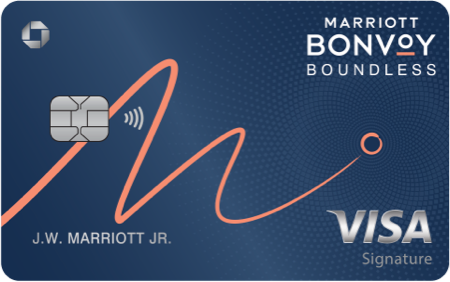
Canada - English
Marriott Bonvoy® American Express® Card
Canada - French
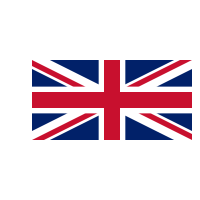
United Kingdom

United Arab Emirates
Marriott Bonvoy® World Mastercard® from Emirates NBD
Marriott Bonvoy™ American Express Card®
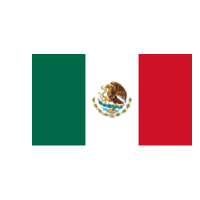
Marriott Bonvoy® Banorte™ Credit Card from Mastercard®

South Korea
Marriott Bonvoy® Shinhan Card

CITIC Marriott Bonvoy® Credit Cards

Saudi Arabia (KSA)
Marriott Bonvoy® American Express® Credit Card

Marriott Bonvoy® HDFC Bank Credit Card

Marriott Bonvoy® QIB Credit Cards

Unlock extraordinary experiences with the Marriott Bonvoy™ app.
Wherever you go, the app gives you easy access to everything you need for your trip.
Top Destinations
Our company.
© 1996 – 2024 Marriott International, Inc. All rights reserved. Marriott Proprietary Information

IMAGES
VIDEO
COMMENTS
Prepaid travel card option 1: Bluebird American Express prepaid debit card. You can order a Bluebird prepaid debit card for free online. You'll then be able to top up in cash or from a bank account. You can also add checks or have funds deposited by others - fees apply for some top up methods.
Information in the table was updated on 25 April 2024. The Post Office Travel Money Card and Travelex card can load the most currencies, however, charges apply for some cash withdrawals at an ATM wth the Post Office deal. Asda Money, Caxton, EasyFX, Sainsbury's and Travelex had similar offers with free ATM withdrawals.
2 great Euro debit cards Wise card. Open your Wise account online or in-app, to hold and exchange 40+ currencies.Order your Wise card for a low one time fee, and top up for free in USD.. Then convert to EUR using the mid-market rate and low, transparent fees for simple spending when you travel. You can get local account details for Euro and a selection of other currencies to get paid like a ...
Uses Visa's live exchange rate. Works in all European countries. Get An Account. Fees - Although you can access a network of over 60,000 ATMs fee-free in the USA, you'll need to pay a $2.50USD fee to withdraw money abroad with your Chime debit card.
Prepaid euro travel cards often have spending and withdrawal limits in place that can vary depending on the card issuer and the specific type of card you have. Typically, there are daily, weekly, or monthly limits on both spending and cash withdrawals. These limits are set to ensure security and to prevent unauthorised use of the card.
The 6 Best Travel Money Cards for Europe. Claire Millard. Writer. Ileana Ionescu. Reviewer. Last updated. 13 June 2023. If you're travelling to Europe, a travel money card can make spending and withdrawing cash when you're away cheaper and more convenient. Different types of travel money cards, including travel debit cards, prepaid travel ...
Sending money abroad or sticking to a budget with built-in tools, no matter your needs, get more from your money with our Standard account. Plus. £3.99/month. Enjoy extra perks like priority in-app support and everyday spending protection, for less than the price of a coffee. All this and more, with Plus. Premium.
The best travel debit card for Europe really depends on your personal preferences and how you like to manage your money. If you'll be travelling widely it makes sense to look for an account with mid-market currency exchange and a large selection of supported currencies as well as EUR, like Wise. Other providers like Canada Post also support ...
These citizens, who are in close proximity to the Eurozone, will save each time they spend with an N26 card while in Europe. N26 provides three free ATM withdrawals per month in euros but does charge a 1.7% fee per ATM withdrawal outside of Europe. Take a look at our guide to the best travel cards for Europe to learn more.
Here are some of the best travel credit cards of 2024: Flexibility, point transfers and a large bonus: Chase Sapphire Preferred® Card. No annual fee: Bank of America® Travel Rewards credit card ...
This guide walks through our picks of 5 of the best travel cards available for Australians heading to Europe, with a look at their features, benefits and drawbacks. 5 best travel cards to use in Europe. Wise - debit card. Revolut - debit card. Travelex - prepaid card.
Wise Multi Currency Card for best exchange rates. Revolut for low fees. Travelex Money Card - Best all rounder. Bankwest Breeze Platinum Credit Card for lowest interest rate. Macquarie Transaction Debit Card for a card you can use in Australia too. The Best Travel Money Cards for Europe. 00:00.
Post Office Euro Card. Pay no charges when you spend abroad using an available balance of local currency supported by the Post Office Travel Money Card. It's safe to use, not linked to your bank account, and you can transfer your funds between 22 currencies, subject to exchange rates, whenever you like via our app or online.
Travel money card. Spend like a local and explore the globe with a travel debit card. Whether it's a virtual or a physical card, we've got all your travel money needs covered. Need an international travel card? Take us all around the world. Exchange currencies, send money abroad, and keep 36 local currencies in-app.
Prepaid Travel Card by Mastercard | Reloadable Travel Cards. MASTERCARD BENEFIT INQUIRIES. Within the U.S.: 1-800-Mastercard (1-800-627-8372) | Outside the U.S.: Mastercard Global Service Phone Numbers. Availability of insurance benefits on your card may vary by card issuer. Please refer to your issuing financial institution for complete ...
This guide includes the top-pick travel cards, the cards to avoid, and how to check what your card's charging you. Top travel credit and debit cards. Chase - fee-free + 1% cashback. Halifax Clarity - fee-free + £20 cashback. Barclaycard Rewards - fee-free + 0.25% cashback. Currensea - links to your bank account + £10 cashback.
The savvy way to pay on holiday Travel Money Card. Travel Money Card. A safe-to-use, prepaid, reloadable, multi-currency card that's not linked to your bank account. No charges when you spend abroad*. Make contactless, Apple Pay and Google Pay™ payments. Manage your account and top up or freeze your card easily with our Travel app.
Cheapest economy class ticket to Europe: From 20,000 Virgin Atlantic Flying Club miles round-trip to the UK. Cheapest business class ticket to Europe: From 68,000 Iberia Avios round-trip to Spain. Cheapest first-class ticket to Europe: 165,000 ANA Mileage Club miles round-trip. The best travel credit cards.
a valid passport. valid identity card or passport of their EU family member. a document proving family ties with the EU citizen (e.g. marriage certificate, birth certificate etc.) and, if applicable, proof of dependency, durability of partnership etc. proof that they will accompany or join the EU citizen in the EU host country, that is:
In Europe's Schengen area, your passport must be valid for at least six months at the time of your entry. At present, the Schengen area includes most European Union (EU) countries, except for Cyprus and Ireland. If you are transiting through Canada or the United Kingdom (UK) enroute to the Schengen area: your passport must be valid for at least six months, even though Canada and the UK do not ...
IMG. IMG's iTravelInsured Travel SE's comprehensive plan includes both trip protections and health insurance for Europe travel and rings in at just $135.36. At this price point, it provides ...
The Foval European Travel Plug Adapter is an essential travel accessory for anyone heading to Europe with three US outlets, four USB-A ports and a USB-C port. ... The best travel credit cards of ...
The UEFA EURO 2024 final tournament is scheduled to take place from 14 June to 14 July 2024. The group stage runs until 26 June, with the knockout stage beginning on 29 June. As the host nation ...
Discover the benefits of Marriott Bonvoy credit cards from Chase and Amex. Earn bonus points and free nights on every purchase, and enjoy access to exclusive offers and rewards. Whether you want to explore Santa Fe, Brooklyn, Fort Lauderdale, Hannover, or Houston, there is a Marriott Bonvoy credit card that suits your travel style. Apply today and start your journey with Marriott Bonvoy.